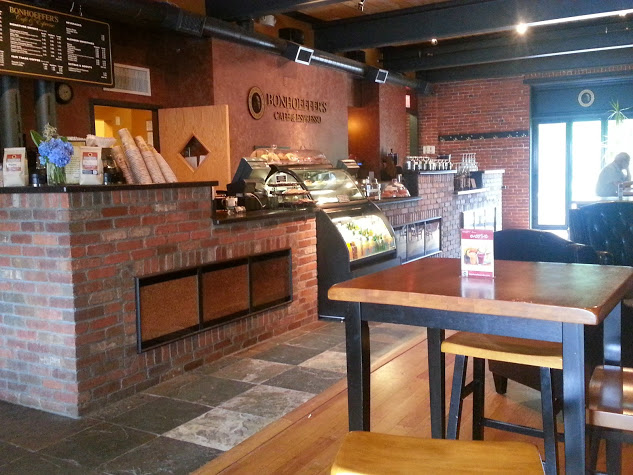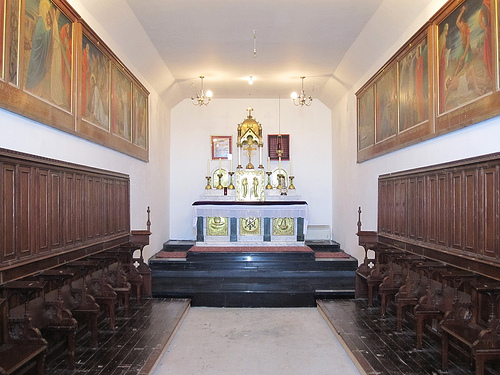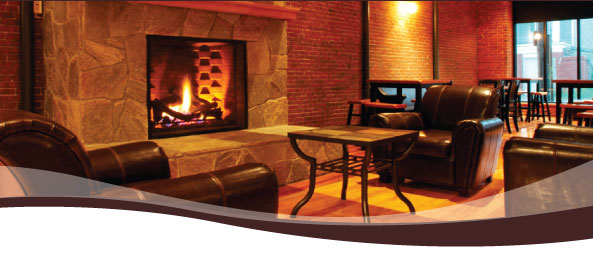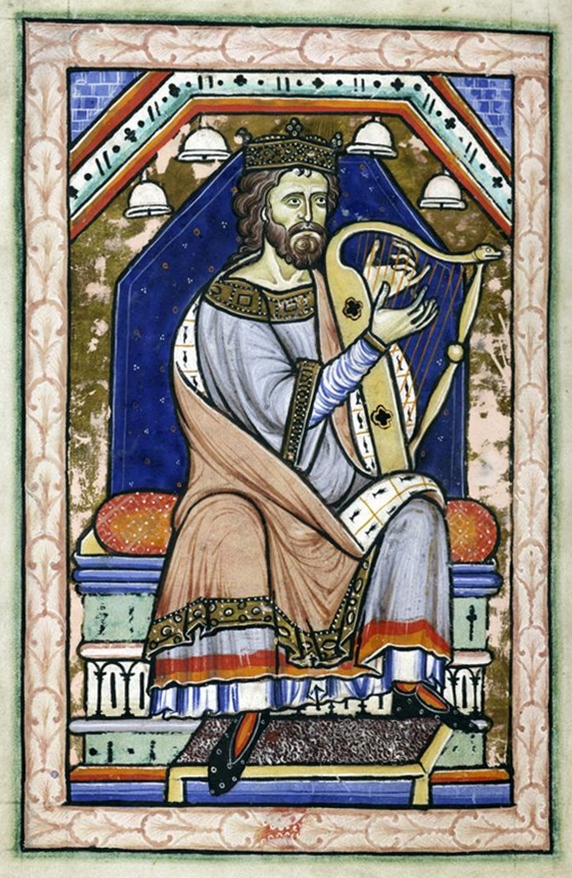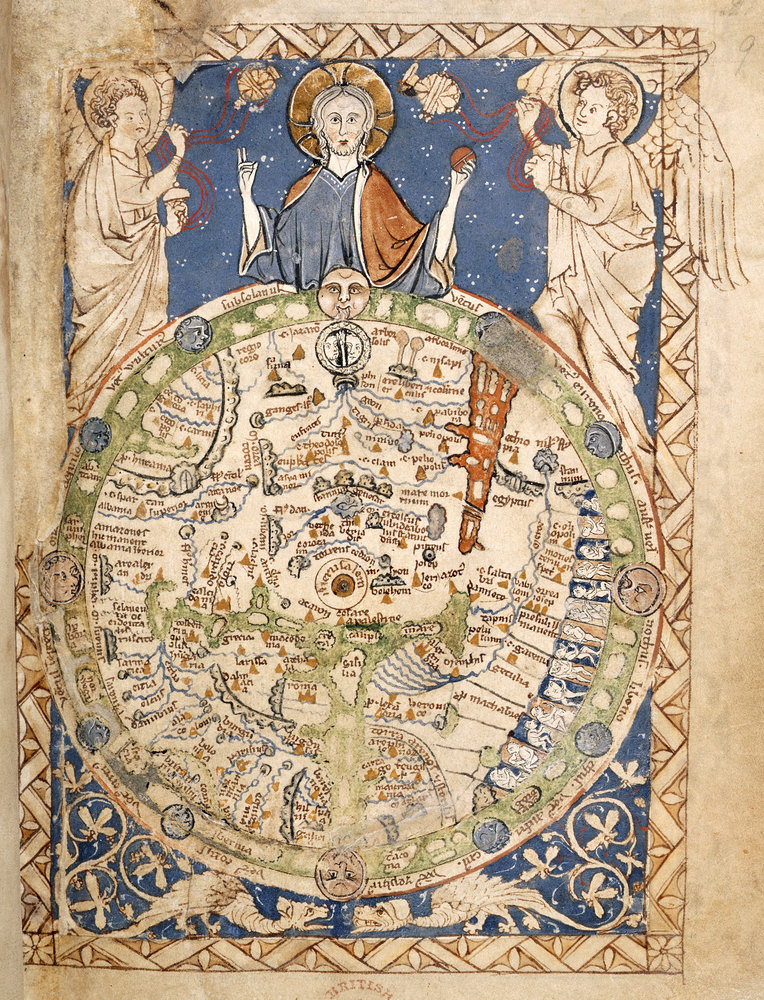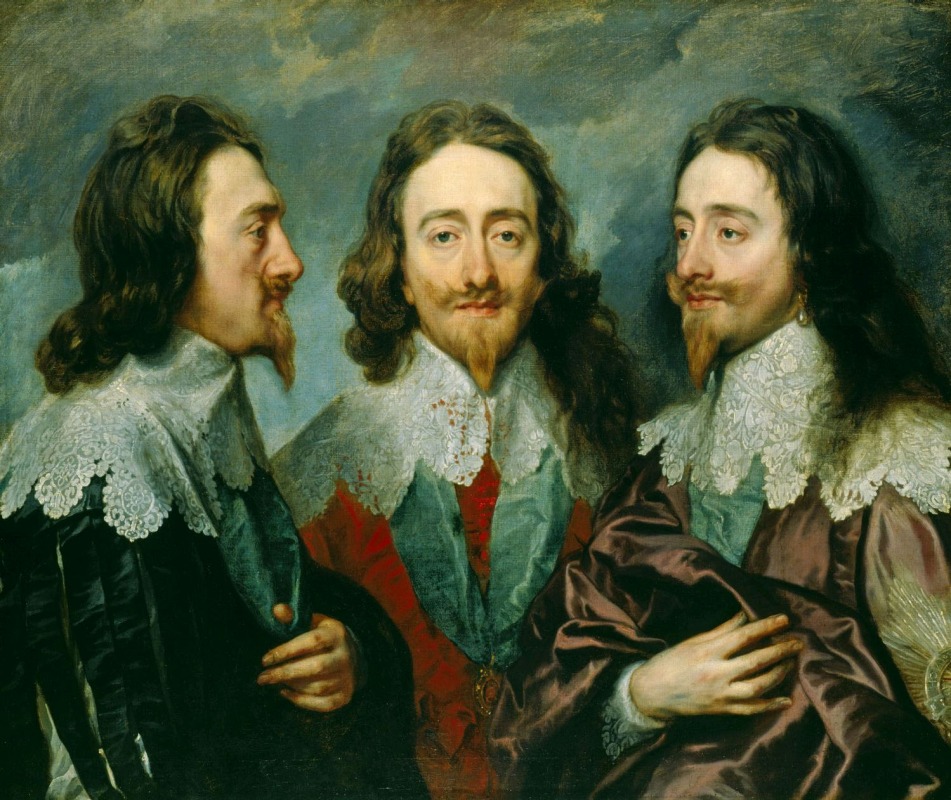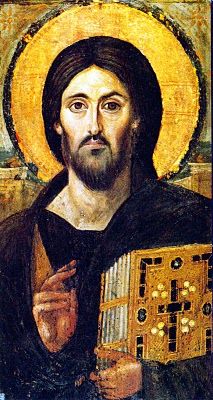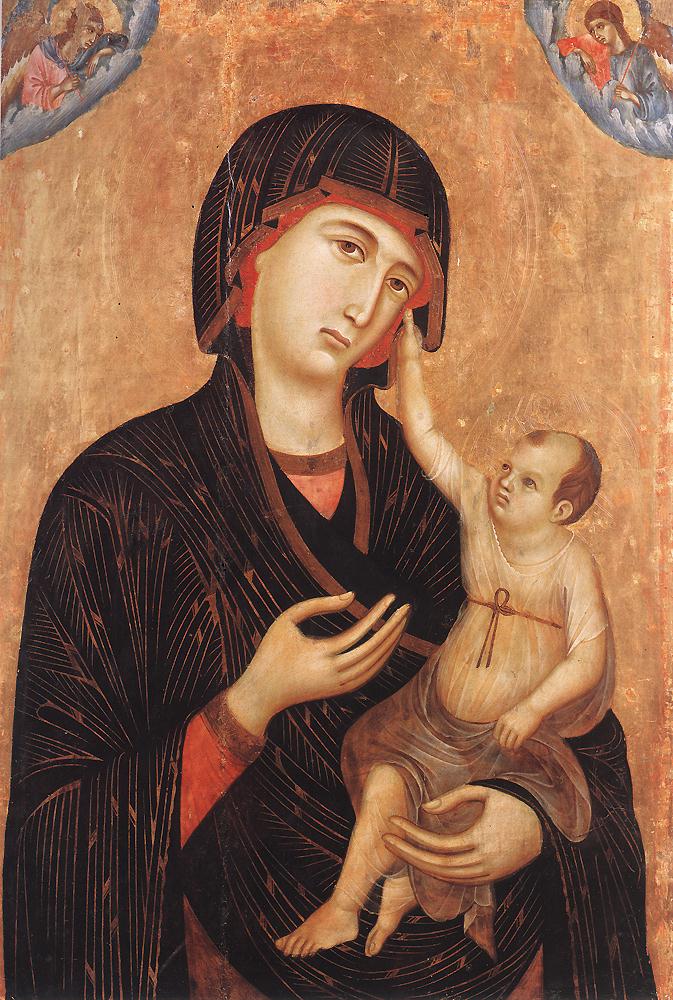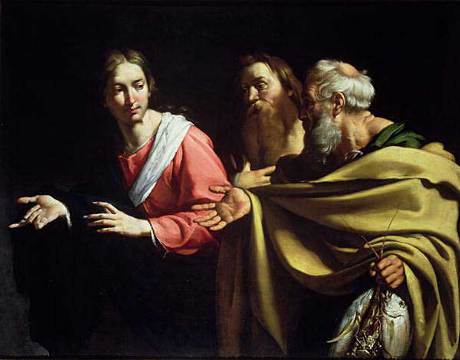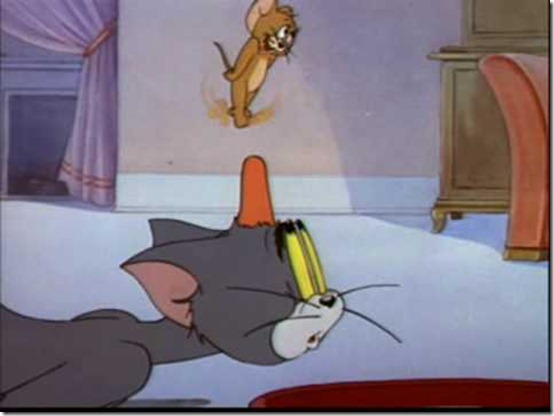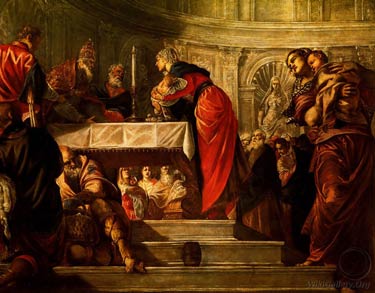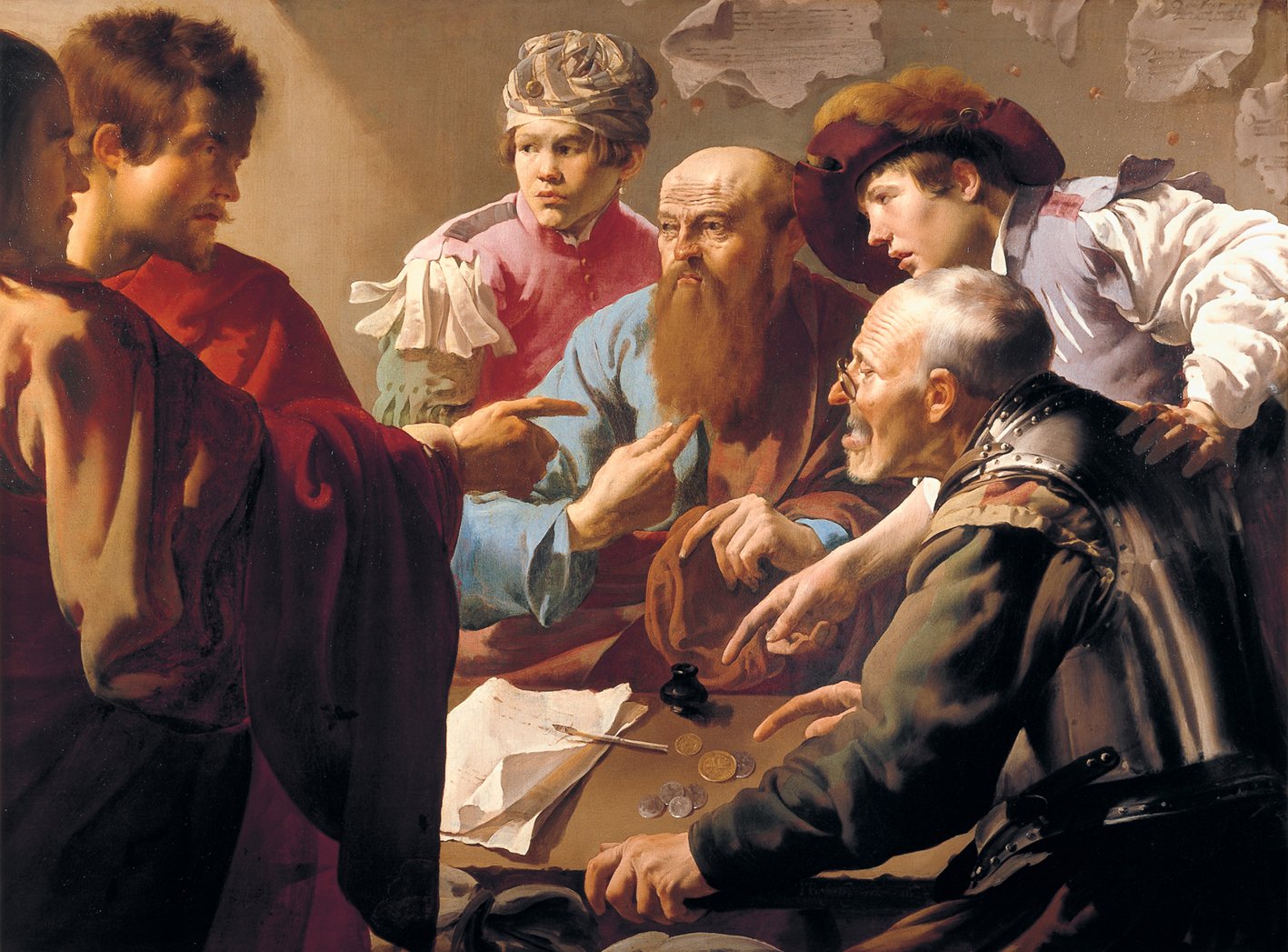In-your-face with the Holy Face! Bearing witness to the Faith through a lapel pin with an icon of Christ!
The Christian Mission to Evangelize American Culture
An Organization to Watch - The St Louis IX Art Society in Southern Louisiana
They have a vision of a liturgically oriented focus on sacred art, that encourages experimentation outside the church and a conservative approach within it. They have a long view. Nobody involved thinks they are the finished product. All are looking to develop and improve and teach the next generation. They have a 50 year time frame.
Does it really matter what Pixar do? Lighten up, it's just a children's movie...
 Thanks to Rick, whoever you are for your comment on the review of Inside Out, posted on August 17th. I responded to it in the comments page, but I think his simple remarks highlight some good discussion points that are worthy of wider consideration. Is the film industry important? Am I just over analyzing an innocent children's film?
Thanks to Rick, whoever you are for your comment on the review of Inside Out, posted on August 17th. I responded to it in the comments page, but I think his simple remarks highlight some good discussion points that are worthy of wider consideration. Is the film industry important? Am I just over analyzing an innocent children's film?
 Here is Rick's comment, he first pulls a quote out of my blogpost:
Here is Rick's comment, he first pulls a quote out of my blogpost:
' "No wonder Riley was struggling with life, she was living in miserable isolation! May the Lord be with your spirit." Just a thought, you might want to know that Riley is not real. It's just a movie mate, take it easy. There are bigger battles to fight.'
And here is my reaction. First the quick reply to this is: '...And this is just a movie review Rick, and that line you quoted was a joke! Lighten up and take it easy yourself…mate .'
But there is a serious point here and in this I am not joking. In what was an entertaining film (although by Pixar’s high standards I would say only moderately entertaining) is the propagation of a false worldview. How important you think this is depends on how influential you think that such film will be. As a general point I would say that clearly certain parts of the film industry take it very seriously because they go to great lengths to engage the mass population with films that reinforce a false worldview in so many aspects – faith, morals, and attitude to the environment, for example. I would say that they have doing this very very successfully over the last 50 years particularly. This can be done sometimes subtly – as with this film – and sometimes more stridently.
 For good or ill, popular culture both reflects and propagates a worldview as powerfully as any essay in an academic journal. If we do not like the wider culture, we cannot disengage from the culture, even if we wanted to. Even the most cloistered monk is product of the greater society of which he is part. The question is not whether or not to engage, therefore, but how do we engage? Are we going to do it well, or badly? How can we transform it so that it becomes one of truth and beauty?
For good or ill, popular culture both reflects and propagates a worldview as powerfully as any essay in an academic journal. If we do not like the wider culture, we cannot disengage from the culture, even if we wanted to. Even the most cloistered monk is product of the greater society of which he is part. The question is not whether or not to engage, therefore, but how do we engage? Are we going to do it well, or badly? How can we transform it so that it becomes one of truth and beauty?
Speaking generally, without having any particular film in mind, the degree of misery and death that results from the propagation of a false psychology, or false morality, or a false environmentalism, or falsity of any form, is immeasurable (I do not exaggerate on this, see my posting on environmentalism next week), and that is what I care about. I am not suggesting that every film is a cynical attempt to manipulate. Very often it is an innocent and well meaning effort to entertain and make money (not bad things in themselves), by appealing to and reflecting the attitudes that it believes its market already has. When the seemingly innocuous presentations are taken to their logical conclusion, however, regardless of motives, the end result is the same in both cases.
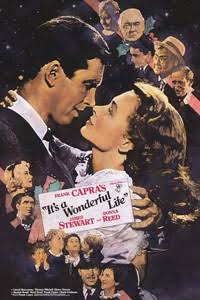 The evangelization of the culture is the battle we must engage in and I would say that there are fewer battles that are more important or bigger.
The evangelization of the culture is the battle we must engage in and I would say that there are fewer battles that are more important or bigger.
Believe it or not, in the 1930s Pius XI praised Hollywood for the influence of the its films on society. However well or badly I am doing it, my motivation in doing a review like this is to try to encourage Christian filmmakers to be involved again and start propagating a worldview that will actually promote the general happiness and harmony in society and ultimately, the salvation of souls. I want to see them engaging as skillfully, as subtly and as engagingly as the secular materialists have been doing in film, music and all aspects of the popular culture. I am not thinking of in-your-face accounts of the gospel, so much as films like Inside Out, which are so engaging that they draw in and influence people without resistance.
 Family films and films for children, incidentally, are an important battleground in this context for two reasons: first, as the Jesuits used to say, give the child and I'll give you the man. Children are the most easily influenced at will grow up to make future society reflect what they believe. Second, few children watch these movies on their own. There are usually adults with them. One of the ways of making these films so popular is to make them appeal simultaneously at different levels. They are designed to engage the adults too. If the parents are entertained also, then they are more likely to want to take their children to the film. This need to build in a dual appeal means that the genre automatically engages the creators philosophically - they have to be able to think about concepts at different levels; and it is what makes children's entertainment simultaneously some of the most sophisticated, engaging and powerful there is. At the root of every story are some assumed facts, premises about the nature of reality that govern the logic of the progression of the story and make it either convincing or not as the case may be. This is inescapable. If we ignore this then we risk inadvertently promoting falsity. If we use it, we can create a beautiful, wonderful, entertaining and stimulating culture that influences for the good.
Family films and films for children, incidentally, are an important battleground in this context for two reasons: first, as the Jesuits used to say, give the child and I'll give you the man. Children are the most easily influenced at will grow up to make future society reflect what they believe. Second, few children watch these movies on their own. There are usually adults with them. One of the ways of making these films so popular is to make them appeal simultaneously at different levels. They are designed to engage the adults too. If the parents are entertained also, then they are more likely to want to take their children to the film. This need to build in a dual appeal means that the genre automatically engages the creators philosophically - they have to be able to think about concepts at different levels; and it is what makes children's entertainment simultaneously some of the most sophisticated, engaging and powerful there is. At the root of every story are some assumed facts, premises about the nature of reality that govern the logic of the progression of the story and make it either convincing or not as the case may be. This is inescapable. If we ignore this then we risk inadvertently promoting falsity. If we use it, we can create a beautiful, wonderful, entertaining and stimulating culture that influences for the good.
Just to redress the balance, here is a Pixar movie I loved (and, I'm going to admit it, I saw it on my own, as an adult and went to see it twice!).
— ♦—
My book the Way of Beauty is available from Angelico Press and Amazon.
—JAY W. RICHARDS, Editor of the Stream and Lecturer at the Business School fo the Catholic University of America said about it: “In The Way of Beauty, David Clayton offers us a mini-liberal arts education. The book is a counter-offensive against a culture that so often seems to have capitulated to a ‘will to ugliness.’ He shows us the power in beauty not just where we might expect it — in the visual arts and music — but in domains as diverse as math, theology, morality, physics, astronomy, cosmology, and liturgy. But more than that, his study of beauty makes clear the connection between liturgy, culture, and evangelization, and offers a way to reinvigorate our commitment to the Good, the True, and the Beautiful in the twenty-first century. I am grateful for this book and hope many will take its lessons to heart.”
Some More about Henry Wingate, his work and the traditional style he paints in
 Continuing in the tradition of the Boston School of portraitists, and the baroque.
Following on from the last post, I thought that readers might be interested to see some more work of artist Henry Wingate, and to know more about the academic method that he uses to such great effect. I like his portraits especially and he is one of relatively few artists around today who is making a real contribution to a re-establishment of traditional principles by teaching as well as painting (motivated by a desire to serve the Church).
Continuing in the tradition of the Boston School of portraitists, and the baroque.
Following on from the last post, I thought that readers might be interested to see some more work of artist Henry Wingate, and to know more about the academic method that he uses to such great effect. I like his portraits especially and he is one of relatively few artists around today who is making a real contribution to a re-establishment of traditional principles by teaching as well as painting (motivated by a desire to serve the Church).
Based in rural Virginia, Wingate studied with Paul Ingbretson in New England and with Charles Cecil, in Florence, Italy. Both Ingbretson and Cecil studied under R H Ives Gammell, the teacher, writer, and painter who perhaps more than anyone else kept the traditional atelier method of painting instruction alive.
The academic method was first developed in Renaissance Italy and was the basis of transmission of the baroque style (described by Pope Benedict XVI as one of three authentically Catholic liturgical artistic traditions, along with the gothic and the iconographic). The method is named after the art academies of the seventeenth century. The most famous early Academy was opened by the Carracci brothers, Annibali, Agostino, and Ludivico, in Bologna in 1600. Their method became the standard for art education and nearly every great Western artist for the next 300 years received, in essence, an academic training.
 Under the influence of the Impressionists the method almost died out. They consciously broke with tradition and refused to pass it on to their pupils. This is strange given that all the well known Impressionists were themselves academically trained, used the skills they learned in their art and in fact could not have produced the paintings they did without it. By 1900 the grand academies of Europe had closed. The fact that it survives at all is largely the legacy of the Boston group of figurative artists of the late 19th and early 20th centuries, most prominent among them John Singer Sargent (who was trained in Paris, but knew them and mixed with them). Other names are Joseph de Camp, Edmund Tarbell and Emil Grundmann. The US was slower to adopt the destructive ideas of Europe and the traditional schools survived there a little longer. Ives Gammell received his training at Boston Museum of Fine Arts in the years just before the First World War. The most well know ateliers that exist today in the US and Italy, were opened by artists who trained under Gammell in the 1970s (when he was in his 80s). Most of people painting and teaching in this style today, that I know of, come out of this line.
Under the influence of the Impressionists the method almost died out. They consciously broke with tradition and refused to pass it on to their pupils. This is strange given that all the well known Impressionists were themselves academically trained, used the skills they learned in their art and in fact could not have produced the paintings they did without it. By 1900 the grand academies of Europe had closed. The fact that it survives at all is largely the legacy of the Boston group of figurative artists of the late 19th and early 20th centuries, most prominent among them John Singer Sargent (who was trained in Paris, but knew them and mixed with them). Other names are Joseph de Camp, Edmund Tarbell and Emil Grundmann. The US was slower to adopt the destructive ideas of Europe and the traditional schools survived there a little longer. Ives Gammell received his training at Boston Museum of Fine Arts in the years just before the First World War. The most well know ateliers that exist today in the US and Italy, were opened by artists who trained under Gammell in the 1970s (when he was in his 80s). Most of people painting and teaching in this style today, that I know of, come out of this line.
 The ateliers of the 19th century had become detached from their Christian ethos and the sacred art of the period was inferior to that of the period 200 years before. However, portraiture, and especially that of the Sargent and the Boston School retained the principles of the balance of sharpness and focus, the variation in colour intensity and the contrast in light and dark that characterized the baroque. Today, even portraiture has declined (Wingate and his ilk being exceptions to this) because very often it is based upon photographic images rather than observation from nature. Photographs reflect the distortion of the lens of the camera, which is different from that of the eye; they have too many sharp edges and everywhere is both highly detailed and highly coloured. Consider, for example, how Wingate has handled the drapery in the portrait at the top, left. He has not supplied a fully detailed rendering, yet there is not a sense of a lack of detail because when we look at the figure, which is what Wingate wants us to look at, the detail supplied is sufficient for our peripheral vision.
The ateliers of the 19th century had become detached from their Christian ethos and the sacred art of the period was inferior to that of the period 200 years before. However, portraiture, and especially that of the Sargent and the Boston School retained the principles of the balance of sharpness and focus, the variation in colour intensity and the contrast in light and dark that characterized the baroque. Today, even portraiture has declined (Wingate and his ilk being exceptions to this) because very often it is based upon photographic images rather than observation from nature. Photographs reflect the distortion of the lens of the camera, which is different from that of the eye; they have too many sharp edges and everywhere is both highly detailed and highly coloured. Consider, for example, how Wingate has handled the drapery in the portrait at the top, left. He has not supplied a fully detailed rendering, yet there is not a sense of a lack of detail because when we look at the figure, which is what Wingate wants us to look at, the detail supplied is sufficient for our peripheral vision.
If you go somewhere where you can see a series of portraits painted over long period (perhaps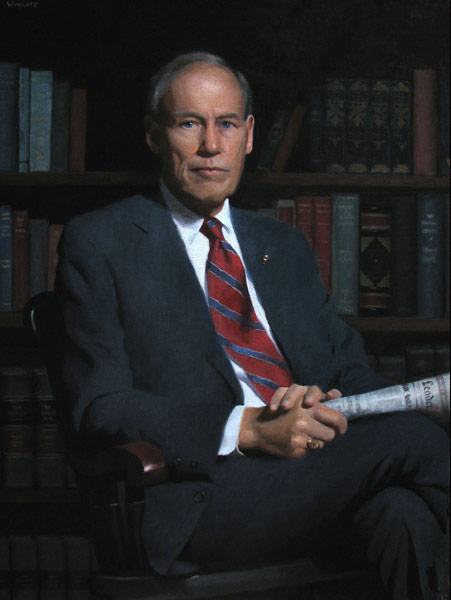 those of the principals hanging in the dining hall of a long-established school or college - I recently went to a dinner at the Roxbury Latin School in Boston - founded in the 17th century), you can see this difference between the traditional and the modern portraits very easily.
those of the principals hanging in the dining hall of a long-established school or college - I recently went to a dinner at the Roxbury Latin School in Boston - founded in the 17th century), you can see this difference between the traditional and the modern portraits very easily.
I am not against photographic portraits by the way, far from it. The point is that it is a different medium to painting, to which we respond differently. These Christian considerations can be communicated through photography, in my opinion, but they have to be done differently. (And if there are any photographers out there, I think that relating the art of photography to the Christian tradition of visual imagery is an area that has not yet been properly developed.) The point here is that paintings made from photographs rarely work unless the artist is conscious of these stylistic considerations and has the skill and experience to adapt what the photographic information.
The retention of these principles in 19th-century portrait painting was not due to a Christian motivation, to my knowledge. If a portrait painter is to make a living then he cannot indulge in the free expression that one might see in other forms. The portrait painter, Christian or not, must seek to balance two things. First, he must produce a painting that is attractive to those who are going to see it, usually the individual and those who know him or her. The usual approach to this is to bring out the best human characteristics of the person. He is ennobling - idealizing - the individual. However, he cannot take this too far and go beyond the bounds of truth. He must also capture the likeness of the individual otherwise it will not be recognized as a portrait. My teacher in Florence, Charles Cecil, taught us not to be bound by an absolute standard of visual accuracy, but to modify what we saw, slightly. We were told to stray ‘towards virtue rather vice’: strengthen the chin slightly, for example. This approach is consistent with the Christian artist’s portrayal of a person, which is as much about revealing what a person can be, as what he is. The idea that the crucial aspect by which the artist reveals the person is by capturing the likeness goes back to St Theodore the Studite, the Church Father whose theology settled the iconoclastic controversy in the 9th century.
For the work of Henry Wingate, see www.henrywingate.com.
A Model for A Cultural Center for the New Evangelization
 Going Local for Global Change.
How About a Chant Cafe with Real Coffee ..and Real Chant?
Going Local for Global Change.
How About a Chant Cafe with Real Coffee ..and Real Chant?
There is a British comedienne who in her routine adopted an onstage persona of a lady who couldn't get a boyfriend and was very bitter about it (although in fact as she became a TV personality beyond the comedy routines, she revealed herself as a naturally engaging and warm character who was in fact happily married with a child). Jo Brand is her name and she used to tell a joke in which she said: 'I'm told that a way to a man's heart is through his stomach. I know that's nonsense - guys will take all the food you give them but it doesn't make them love you. In fact I'll tell you the only certain way to man's heart...through the rib cage with a bread knife.' Well wry humour aside, I think that in fact there is more truth to the old adage than Jo Brand would have acknowledged (on stage at least). Perhaps we can touch people's hearts in the best way through food and drink, and in particular coffee.
There is a coffee shop in Nashua NH where I live called Bonhoeffer's. It is the perfect place for conversation. They have designed it so that people like to sit and hang out - pleasing decor, free wifi, and different sitting arrangements, from pairs of cozy arm chairs to highbacked chairs around tables. The staff are personable and it is roomy enough that they can place clusters of chairs and sofas that are far enough apart so that you don't feel that you are eavesdropping on your neighbors' conversation; and close enough together that you feel part of a general buzz of conversation around you. There is not an extensive food menu but what they have is good and goes nicely with the image it conveys of coffee and relaxed conversation - pastries, a slice of quiche or crepes for example. It has successfully made itself a meeting place in the town because of this.
This is all very well and good, if not particularly remarkable. But, you wouldn't know unless you recognized the face of the German protestant theologian Dietrich Bonhoeffer in the cafe logo and started to ask questions, or noticed and took the time to read the display close the door as you are on your way out, that it is run by the protestant church next door, Grace Fellowship Church. Furthermore a proportion of turnover goes towards supporting locally based charities around the world - they list as examples projects in the Ukraine, Myanmar, Ethiopia, Haiti and Jamaica on their website. Talks and events linked to their faith are organised and there are pleasant well equipped meeting rooms available for hire. I include the logo and website to illustrate my points, but also in the hope that if Bonhoeffer's see this they might push an occasional free coffee in my direction...come on guys!
Well, it was worth a try. Anyway, back to more serious things...the presentation of their mission does not even dominate the cafe website which talks more about things such as the beans they use in their coffee, prices and opening times and the food menu. The most eye-catching aspect when I was nosing around is the announcement of the new crepes menu! There is one tab that has the heading Hope and Life Kids and when you click it it takes you through to a dedicated website of that name, here , which talks about the charity work that is done.
I went into Bonhoeffer's recently with Dr William Fahey, the President of Thomas More College, just for cup of coffee and a chat, of course, and he remarked to me as we sat down that this is the sort of the thing that protestants seem to be able to organize; and how we wished he saw more Catholics doing the same thing.
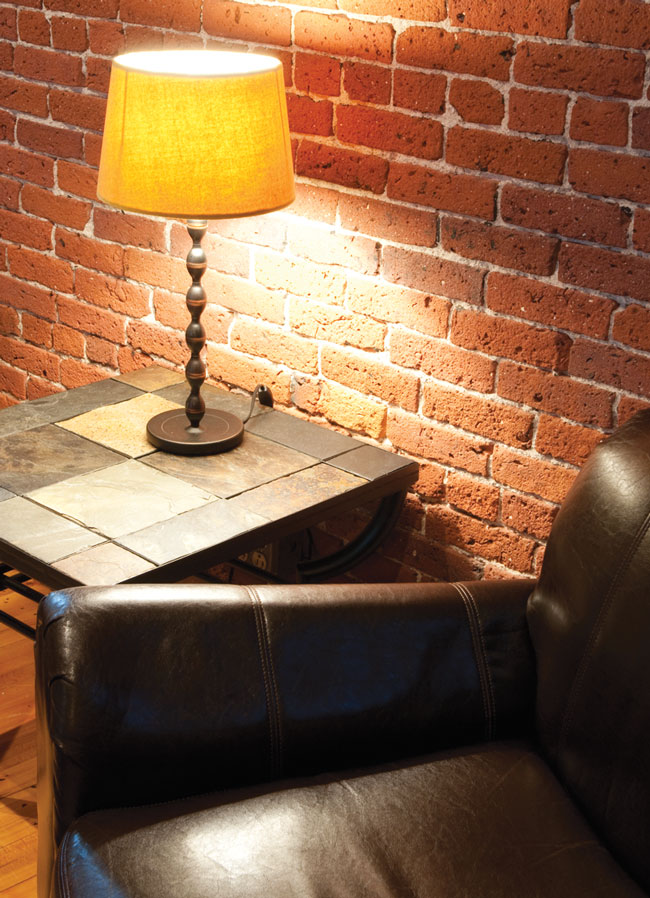 I agree. What the people behind this little cafe had done was to create a hub for the local community that has an international reach. It is at once global and personal. I would like to see exactly what they have done replicated by Catholics. But, crucially, good though it is I would add to it, and make it distinctly Catholic so that it attracts even more coffee drinkers and then can become a subtle interface with the Faith, a focus for the New Evangelization in the neighborhood.
I agree. What the people behind this little cafe had done was to create a hub for the local community that has an international reach. It is at once global and personal. I would like to see exactly what they have done replicated by Catholics. But, crucially, good though it is I would add to it, and make it distinctly Catholic so that it attracts even more coffee drinkers and then can become a subtle interface with the Faith, a focus for the New Evangelization in the neighborhood.
I don't know how to run coffee shops, so I would be happy with a first step that copied precisely theirs - the establishment of coffee shop that competes with all others in doing what coffee shops are meant to do, sell coffee. Then I would offer through this interface talks and classes that transmit the Way of Beauty, many of which are likely to have an appeal to many more than Catholics (especially those with a 'new-age spiritual' bent). There are a number that come to mind that attract non-Christians and can be presented without compromising on truth - icon painting classes; or 'Cosmic Beauty' a course in traditional proportion in harmony based upon the observation of the cosmos; or praying with the cosmos - a chant class that teaches people to chant the psalms and explains how the traditional pattern of prayer conforms to cosmic beauty.
A yoga class that has the word yoga but is simply a adoption of the physical aspects would attract people who are open to spirituality. Yoga is very successful in turning people with no previous inclination to the spiritual to Eastern spirituality - so why not offer Christian mediation/contemplative prayer and incorporate this into the instruction. I once had discussions with a Dominican about the known prayer postures of St Dominic. He showed me some stick figure diagrams he had drawn to represent them. He thought that these could be the basis for a Christian yoga that engages people spiritually through a focus on the physical. I don't know if he was right, but something on these lines would be good.
Another way of engaging people who are then going to be open to mediation, chant and retreats is to have 12-step fellowship groups such as Alcoholics Anonymous meeting closeby. I am aware of several priests who go to AA and also many converts to Catholicism who were first given a faith in God through such groups. The 12 steps are a systematic application of Christian principles (without reference to the Church). The non-demoninational character of the groups does mean that people can be misdirected towards other faiths in their search, but if we were present to provide an attractive picture of the Faith, it would attract interest I am sure.
 Another class that might engage people is a practical philosophy class that directs people towards the metaphysical and emphasizes the need of all people to lead a good life and to worship God in order to be happy and feel fulfilled. This latter part is vital for it is the practice of worship that draws people up from a lived philosophy into a lived theology and ultimately to the Faith. For it is only once experienced that people become convinced and want more. This works. When I was living in London I used to see advertisements in the Tube for a course in practical philosophy. These were offered by a group that had a modern 'universalist' approach to religion in which they saw each great 'spiritual tradition' as different cultural expressions of a single truth that were equally valid. The adverts however, did not mention religion at all but talked about the love and pursuit of universal wisdom that looked like a new agey mix of Eastern mysticism and Plato. The content of the classes, they said, was derived from the common experience of many if not all people and from it one could hope to lead a happy useful life. They had great success in attracting educated un-churched professionals not only to attend the class, but also to go in to attend more classes and ultimately to commit their lives to their recommended way of living. They were also prepared to donate generously - this is a rich organisation. Their secret was the emphasis on living the life that reason lead you to and not require, initially at least a commitment to formal religion. Most became religious in time, which ultimately lead some to convert to Christianity - although many, because of the flaws in the opening premises and the conclusion this lead to, were lead astray too. It was by meeting some of these converts that I first heard about it. There is room, I think, for a properly worked out Catholic version of this.
Another class that might engage people is a practical philosophy class that directs people towards the metaphysical and emphasizes the need of all people to lead a good life and to worship God in order to be happy and feel fulfilled. This latter part is vital for it is the practice of worship that draws people up from a lived philosophy into a lived theology and ultimately to the Faith. For it is only once experienced that people become convinced and want more. This works. When I was living in London I used to see advertisements in the Tube for a course in practical philosophy. These were offered by a group that had a modern 'universalist' approach to religion in which they saw each great 'spiritual tradition' as different cultural expressions of a single truth that were equally valid. The adverts however, did not mention religion at all but talked about the love and pursuit of universal wisdom that looked like a new agey mix of Eastern mysticism and Plato. The content of the classes, they said, was derived from the common experience of many if not all people and from it one could hope to lead a happy useful life. They had great success in attracting educated un-churched professionals not only to attend the class, but also to go in to attend more classes and ultimately to commit their lives to their recommended way of living. They were also prepared to donate generously - this is a rich organisation. Their secret was the emphasis on living the life that reason lead you to and not require, initially at least a commitment to formal religion. Most became religious in time, which ultimately lead some to convert to Christianity - although many, because of the flaws in the opening premises and the conclusion this lead to, were lead astray too. It was by meeting some of these converts that I first heard about it. There is room, I think, for a properly worked out Catholic version of this.
 Along a similar line are classes that help people to discern their personal vocation, again using traditional Catholic methods. Once we discover this then we truly flourish. God made us to desire Him and to desire the means by which we find Him. While the means by which we find Him is the same in principle for each of us, we are all meant to travel a unique path that is personal to us. To the degree that we travel this path, the journey of life, as well as its end, is an experience of transformation and joy.
Along a similar line are classes that help people to discern their personal vocation, again using traditional Catholic methods. Once we discover this then we truly flourish. God made us to desire Him and to desire the means by which we find Him. While the means by which we find Him is the same in principle for each of us, we are all meant to travel a unique path that is personal to us. To the degree that we travel this path, the journey of life, as well as its end, is an experience of transformation and joy.
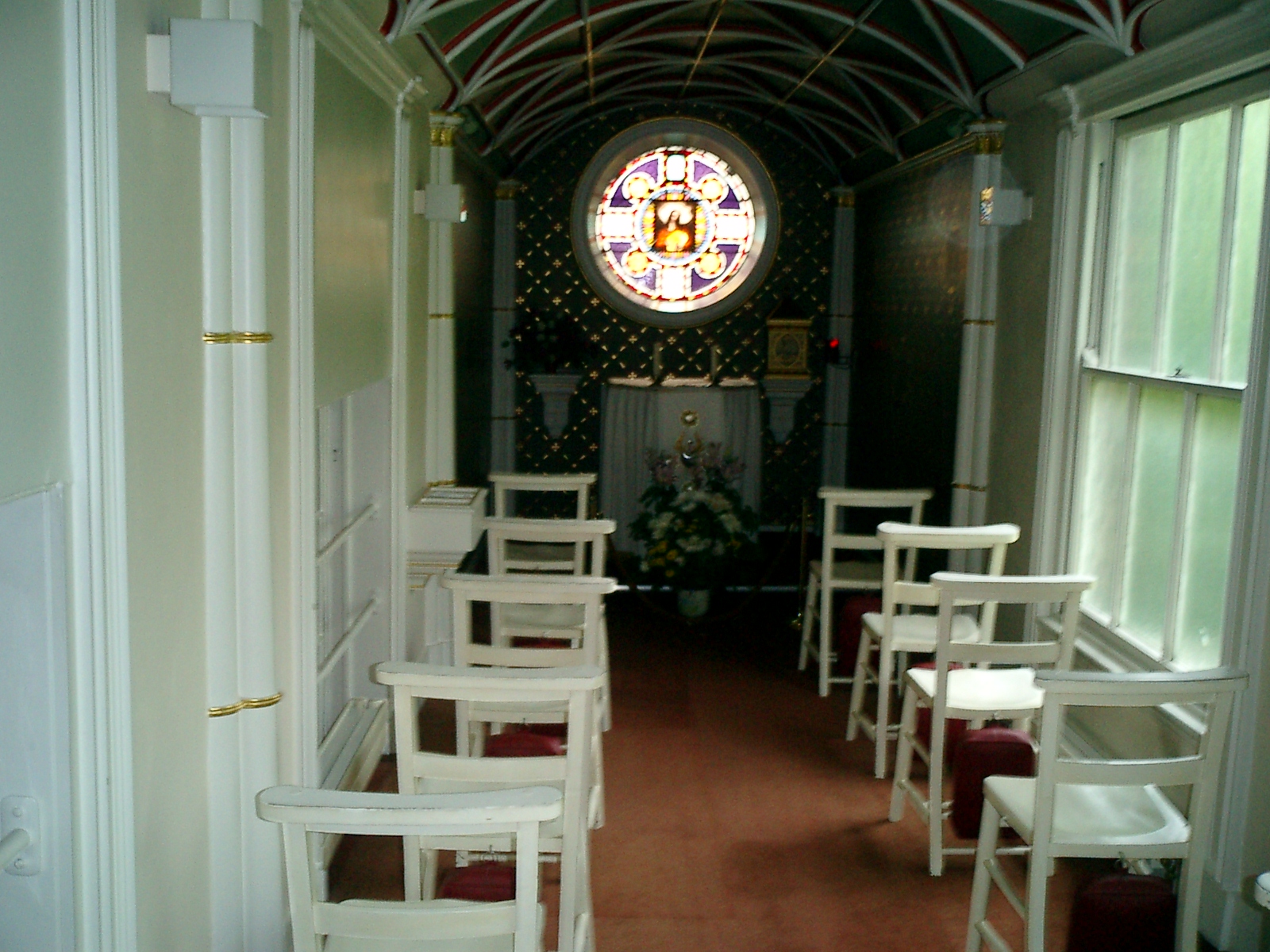 Drawing on people from the local Catholic parishes I would hope to start groups that meet for the singing of an Office - Vespers and or Compline or Choral Evensong and fellowship on a week night; and have talks on the prayer in the home and parish as described by the The Little Oratory. This book was intended as a manual for the spiritual life of the New Evangelization and would ideally be one that supports the transmission of practices that are best communicated by seeing, listening and doing. These weekly 'TLO meetings' would be the ideal foundation for learning and transmitting the practices. They would be very likely a first point of commitment for Catholics who might then be interested in getting involved in other ways. It would enable them also to go back to their families and parishes teach any others there who might be interested to learn.
Drawing on people from the local Catholic parishes I would hope to start groups that meet for the singing of an Office - Vespers and or Compline or Choral Evensong and fellowship on a week night; and have talks on the prayer in the home and parish as described by the The Little Oratory. This book was intended as a manual for the spiritual life of the New Evangelization and would ideally be one that supports the transmission of practices that are best communicated by seeing, listening and doing. These weekly 'TLO meetings' would be the ideal foundation for learning and transmitting the practices. They would be very likely a first point of commitment for Catholics who might then be interested in getting involved in other ways. It would enable them also to go back to their families and parishes teach any others there who might be interested to learn.
We could perhaps sell art by making it visible on the walls or have a permanent, small gallery space adjacent to the sitting area (provided it was good enough of course - better nothing at all than mediocre art!). All would available in print form online as well of course, just as talks could be made available much more widely and broadcasted out across the net if there was interest. This is how the local becomes global.
What I am doing here is taking the business model of the cafe and combining it with the business model of the Institute of Catholic Culture which is based in Arlington Diocese in Virginia. I wrote about the great work of Deacon Sabatino and his team at the ICC in Virginia in an article here called An Organisational Model for the New Evangelization - How To Make it At Once Personal and Local, and have International Recognition. His work is focussed on Catholic audiences, and is aimed predominently at forming the evangelists, rather than reaching those who have not faith (although I imagine some will come along to their talks). By having an excellent program and by taking care to ensure that his volunteers feel involved and are appreciated and part of a community (even organising special picnics for them) Deacon Sabatino has managed to get hundreds volunteering regularly.
Another group that does this just well is the Fra Angelico Institute for Sacred Arts in Rhode Island run by Deacon Paul Iacono. I have written about his great work here. The addition of a coffee shop give it a permanent base and interface with non-Catholics and even the non-churched.
 I would start in a city neighborhood in an area with a high population and ideally with several Catholic parishes close by that would provide the people interested in attending and be volunteers and donors helping the non-coffee programs. It always strikes me that the Bay Area of San Francisco, especially Berkeley, is made for such a project. There is sufficiently high concentration of Catholics to make it happen, a well established cafe culture; and the population is now so far past 'post-Christian' that there is an powerful but undirected yearning for all things spiritual that directs them to a partial answer in meditation centers, wellness groups, spiritual growth and transformation classes, talks on reaching for your 'higher self' and so on. Many are admittedly hostile to Christianity, but they seek all the things that traditional, orthodox Christianity offers in its fullness although they don't know it. Provided that they can presented with these things in such a way that it doesn't arouse prejudice, they will respond because these things meet the deepest desire of every person.
I would start in a city neighborhood in an area with a high population and ideally with several Catholic parishes close by that would provide the people interested in attending and be volunteers and donors helping the non-coffee programs. It always strikes me that the Bay Area of San Francisco, especially Berkeley, is made for such a project. There is sufficiently high concentration of Catholics to make it happen, a well established cafe culture; and the population is now so far past 'post-Christian' that there is an powerful but undirected yearning for all things spiritual that directs them to a partial answer in meditation centers, wellness groups, spiritual growth and transformation classes, talks on reaching for your 'higher self' and so on. Many are admittedly hostile to Christianity, but they seek all the things that traditional, orthodox Christianity offers in its fullness although they don't know it. Provided that they can presented with these things in such a way that it doesn't arouse prejudice, they will respond because these things meet the deepest desire of every person.
Here's the additional element that holds it all together. As well as the workshops or classes I have mentioned I would have the Liturgy of the Hours prayed in a small but beautiful chapel adjacent to and accessible from the cafe on a regular basis, ideally with the full Office sung. The idea is for people in the cafe to be aware that this is happening, but not to feel bound to go or guilty for not doing so. I thought perhaps a bell and announcement: 'Lauds will be chanted beginning in five minutes in the chapel for any who are interested.' Those who wish to could go to the chapel and pray, either listening or chanting with them. The prayer would not be audible in the cafe. So those who were not interested might pause momentarily and then resume their conversations.
From the people who attend the TLO meetings I would recruit a team of volunteers might volunteer to sing in one or more extra Offices during the week if they could. If you have two people together, meeting in the name of Jesus, they can sing an Office for all. The aim is to have the Office sung on the premises give good and worthy praise to God for the benefit of the customers, the neighbourhood, society and the families and groups that each participates in aside from this and for the Church.
When the point is reached that the Office is oversubscribed, we might encourage groups to pray on behalf of others also in different locations by, for example singing Vespers regularly in local hospitals or nursing homes. I describe the practice of doing this in an appendix in The Little Oratory and in a blog post here: Send Out the L-Team, Making a Sacrifice of Praise for American Veterans.
As this grows, the temptation would be to create a larger and larger organization. This would be a great error I think. The preservation of a local community as a driving force is crucial to giving this its appeal as people walk through the door. There is a limit to how big you can get and still feel like a community. Like Oxford colleges, when it gets to big, you don't grow into a giant single institution, but limit the growth and found a new college. So each neighborhood could have its own chant cafe independently run. There might be, perhaps a central organization that offers franchises in The Way of Beauty Cafes so that the materials and knowledge needed to make it a success in your neighborhood are available to others if they want it.
I have made the point before that eating and drinking are quasi-liturgical activities by which we echo the consuming of Christ Himself in the Eucharist (it is not the other way around - the Eucharist comes first in the hierarchy). So it should be no surprise to us that food and drink offered with loving care and attention open up the possibilities of directing people to the love of God. If the layout and decor are made appropriate to that of a beautiful coffee shop and subtly and incorporating traditional ideas of harmony and proportion, and colour harmony then it will be another aspect of the wider culture that will stimulate the liturgical instincts of those who attend. (I have described how that can be done in the context of a retail outlet in an appendix of The Little Oratory.) We should bare in mind Pope Benedict's words from Sacramentum Caritatis (71):
'Christianity's new worship includes and transfigures every aspect of life: "Whether you eat or drink, or whatever you do, do all to the glory of God." (1Cor 10:13) Here the instrinsically eucharistic nature of Christian life begins to take shape. The Eucharist, since it embraces the concrete, everyday existence of the believer, makes possible, day by day, the progressive transfiguration of all those called by grace to reflect the image of the Son of God (cf Rom 8:29ff). There is nothing authentically human - our thoughts and affections, our words and deeds - that does not find in the sacrament of the Eucharist the form it needs to be lived in the full.'
So Jo Brand, we'll put away the bread knife and offer the bread instead!
Step one seems to be...first get your coffee shop. Anyone who thinks they can help us here please get in touch and we'll make it happen!
Creating the New Culture of Beauty - a little parish in Jasper, Georgia shows us the way
The artistic and musical creativity of a parish shows us why liturgical and, hence, cultural renewal is likely to be a grass-roots, bottom-up process. If you want to know how your parish can do it, read this. Who is going to patronize, ie pay for, the new works that will the Catholic culture? Will it be committees created by the Vatican? Unlikely, given the evidence of the past 50 years or so. Will it be those who fund the grand cathedrals in our large cities? Possibly, but again the evidence of the recent past is not too encouraging there (although not altogether hopeless). How about the ordinary parish church? I think probably the latter. The sheer statistics point to it. There is no reason to believe that a parish priest or parish community is going to be any less (or more) aware of Catholic cultural traditions than those of cathedrals. But given that there are more parishes than cathedrals, says it is more likely that the first green shoots of cultural recovery are going to happen at the local level.
The obvious objection to this is money - where will parishes get the money to patronise the liturgical arts? Don't you need the sort of money that those who build cathedrals have to pay the artists well? I would say no. First, I do believe that artists ought to be paid at least the hourly rate we would pay any other artisan for his work (think of how much a plumber charges) which would ensure a decent price for a picture. But I say also that if the will is there it can pay for art. If a church can afford to keep the plumbing and its roof in good order; it can afford to pay reasonable prices for art and music.
I have two heartening stories about ordinary parish churches having the interest to do great work. The first is the subject of this week's story and is in Jasper, Georgia. The second is a little church in Wyoming that has decided to install a full cosmati pavement in its floor, to replace the carpeting that was there previously. I will give more detail about the second on another occasion. But today Our Lady of the Mountains, Jasper, Georgia, set, as the name suggest up in the hills, the blueridge North Georgia mountains.
I have just been contacted by Fr Charles Byrd the paster who informed me that the church had commissioned and original piece of music for their Good Friday liturgy. I'll let him tell you some detail:
'On Good Friday, 18 April 2014, at the close of Communion, the St. Gregory Choir of Our Lady of the Mountains Catholic Church in Jasper, Georgia, with soloist, Mr. Joseph McBrayer, and organist, Mr. Joseph D’Amico, under the direction of Mrs. Bridget Scott, performed for the first time ever The Song of Rood. Our relic of the True Cross, which the congregation had just venerated, was enthroned upon the altar. This recording documents that first performance. The parish had commissioned this music from Mr. Dallas Gambrell with the text loosely based upon a portion of Saint Caedmon’s epic poem, The Dream of the Rood, one of the oldest, if not the oldest, Christian texts written in English. St. Caedmon was a 7th / 8th century herdsman, lay brother, and poet, and is considered the Father of English Sacred Song. The section we used for the anthem is that part of his longer poem that had been carved in runes on the Ruthwell Cross (or rood), a standing preaching cross, in what is today southwest Scotland.'
It was sung after the Reproaches and Communion and Fr Charles tells me, may be used for the Exaltation of the Cross. You can read more about this and hear the recording of the piece (which I like very much) on their website here.
This is the same parish that contacted me and was looking to commission four icons (they commissioned two from me in the end and I referred them to another iconographer for the other two). What was noticeable to me in undertaking these is how knowledgeable and helpful he was as a patron. He had a firm idea of what he wanted, had done all the background reading on the appearances of the two saints - Ambrose and Gregory - and was clear in his mind why he wanted new images. He was open to suggestions from me as to how we might conform to his idea. As this discussion was taking place I was reminded of John Paul II's call, in his Letter to Artists, of a 'renewed dialogue' between artists and the Church. How did JPII imagine this dialogue would play out, one wonders. I can't answer that, but my own part, I don't think this is something that is going to happen at an institutional level or at grand conferences in Rome. Rather, it will right at the grassroots, where priest and congregation talk to artist and between them they produce something that will be used regularly by those who are commissioning. The great thing about the modern age is that technology, such as the internet (with media such as this blog!), ensure that remoteness does not mean isolation. Georgia and Wyoming can speak to world as easily as Rome or Washington.
Here we have someone with a great sense of the culture and the liturgy and this is what makes it. As a general rule, for a parish to be able to achieve this is needs a consensus on what is good, artistically and musically; or at least a well placed trust on the part of those who do not know, in those who do. That is the difficult part. If priest and congregation are at odds with each other it will reduce the chances of anything being done. Choosing art or music by committee which has to reconcile widely differing views by compromise, often leads to the worst of all both worlds, not the best.
Coming back to this commission: here is the description of their adaptation of the text for modern congregations: 'Our text, a modern adaptation, takes some liberties with Caedmon’s text. We augmented the text with some verses from the Vercelli Book to give this abridged poem more clarity. The original Anglo-Saxon text would be hard for us to understand today, but one phrase in that original tongue remains in our anthem — “Krist waes on rodi,” which means “Christ was on the cross.” There are two voices in the poem, the voice of the dreamer who narrates his vision, and the voice of the Holy Rood, who recalls the heroic struggle of the Crucifixion of the Lord. We can almost think of this song as a dramatic play. The chorus speaks for Caedmon and a soloist speaks the soliloquy of the Rood.
Chorus:
Hear now a vision long foretold of greatest hero from of old.
Naked He embraced the rood;
He was stripped upon the wood.
So the blessed Cross did say of Him who died for us that day.
Krist waes on rodi, Krist waes on rodi, Krist waes on rodi. Gloria.
Krist waes on rodi, Krist waes on rodi, Krist waes on rodi. Gloria.'
I give you images of the paintings commissioned from me which were delivered last Christmas as well as the recording of the music commissioned. I can't comment on the pictures (being mine) and I think the music is has the qualities of goodness of form, holiness and universality that are needed in liturgical music. Regardless, here is the point: even if you don't like what Our Lady of the Mountains has done, we can see from this example that this really can be a bottom up cultural transformation. It starts with inculturation in families and parishes who demand beautiful forms in unity with the liturgy, and beautiful worship. I don't know what the liturgy at Our Lady of the Mountains is like, but I'm guessing from the images and the music I have heard, that it is not dominated by guitars and tambourines.
From the fact that the number of parish churches is much greater
How to Make an Icon Corner
 Beauty calls us to itself and then beyond, to the source of all beauty, God. God's creation is beautiful, and God made us to apprehend it so that we might see Him through it. The choice of images for our prayer, therefore, is important. Beautiful sacred imagery not only aids the process of prayer, but what we pray with influences profoundly our taste: praying with beautiful sacred art is the most powerful education in beauty that there is. In the end this is how we shape our culture, especially so when this is rooted in family prayer. The icon corner will help us to do that. I am using icon here in the broadest sense of the term, referring to a sacred image that depicts the likeness of the person portrayed. So one could as easily choose Byzantine, gothic or even baroque styles.
The contemplation of sacred imagery is rooted in man’s nature. This was made clear by the 7th Ecumenical Council, at Nicea. Through the veneration icons, our imagination takes us to the person depicted. The veneration of icons, therefore, is an aid to prayer first and it serves to stimulate and purify the imagination. This is discussed in the writings of Theodore the Studite (759-826AD), who was one of the main theologians who contributed to the resolution of the iconoclastic controversy.
Beauty calls us to itself and then beyond, to the source of all beauty, God. God's creation is beautiful, and God made us to apprehend it so that we might see Him through it. The choice of images for our prayer, therefore, is important. Beautiful sacred imagery not only aids the process of prayer, but what we pray with influences profoundly our taste: praying with beautiful sacred art is the most powerful education in beauty that there is. In the end this is how we shape our culture, especially so when this is rooted in family prayer. The icon corner will help us to do that. I am using icon here in the broadest sense of the term, referring to a sacred image that depicts the likeness of the person portrayed. So one could as easily choose Byzantine, gothic or even baroque styles.
The contemplation of sacred imagery is rooted in man’s nature. This was made clear by the 7th Ecumenical Council, at Nicea. Through the veneration icons, our imagination takes us to the person depicted. The veneration of icons, therefore, is an aid to prayer first and it serves to stimulate and purify the imagination. This is discussed in the writings of Theodore the Studite (759-826AD), who was one of the main theologians who contributed to the resolution of the iconoclastic controversy.
In emphasising the importance of praying with sacred images Theodore said: “Imprint Christ…onto your heart, where he [already] dwells; whether you read a book about him, or behold him in an image, may he inspire your thoughts, as you come to know him twofold through the twofold experience of your senses. Thus you will see with your eyes what you have learned through the words you have heard. He who in this way hears and sees will fill his entire being with the praise of God.” [quoted by Cardinal Schonborn, p232, God’s Human Face, pub. Ignatius.]
It is good, therefore for us to develop the habit of praying with visual imagery and this can start at home. The tradition is to have a corner in which images are placed. This image or icon corner is the place to which we turn, when we pray. When this is done at home it will help bind the family in common prayer.
![]() Accordingly, the Catechism of the Catholic Church recommends that we consider appropriate places for personal prayer: ‘For personal prayer this can be a prayer corner with the sacred scriptures and icons, in order to be there, in secret, before our Father. In a Christian family kind of little oratory fosters prayer in common.’(CCC, 2691)
Accordingly, the Catechism of the Catholic Church recommends that we consider appropriate places for personal prayer: ‘For personal prayer this can be a prayer corner with the sacred scriptures and icons, in order to be there, in secret, before our Father. In a Christian family kind of little oratory fosters prayer in common.’(CCC, 2691)
I would go further and suggest that if the father leads the prayer, acting as head of the domestic church, as Christ is head of the Church, which is His mystical body, it will help to re-establish a true sense of fatherhood and masculinity. It might also, I suggest, encourage also vocations to the priesthood.
The placement should be so that the person praying is facing east. The sun rises in the east. Our praying towards the east symbolizes our expectation of the coming of the Son, symbolized by the rising sun. This is why churches are traditionally ‘oriented’ towards the orient, the east. To reinforce this symbolism, it is appropriate to light candles at times of prayer. The tradition is to mark this direction with a cross. It is important that the cross is not empty, but that Christ is on it. in the corner there should be representation of both the suffering Christ and Christ in glory.
‘At the core of the icon corner are the images of the Christ suffering on the cross, Christ in glory and the Mother of God. An excellent example of an image of Christ in glory which is in the Western tradition and appropriate to the family is the Sacred Heart (the one from Thomas More College's chapel, in New Hampshire, is shown). From this core imagery, there can be additions that change to reflect the seasons and feast days. This way it becomes a timepiece that reflects the cycles of sacred time. The “instruments” of daily prayer should be available: the Sacred Scriptures, the Psalter, or other prayer books that one might need, a rosary for example.
This harmony of prayer, love and beauty is bound up in the family. And the link between family (the basic building block upon which our society is built) and the culture is similarly profound. Just as beautiful sacred art nourishes the prayer that binds families together in love, to each other and to God; so the families that pray well will naturally seek or even create art (and by extension all aspects of the culture) that is in accord with that prayer. The family is the basis of culture.
Confucius said: ‘If there is harmony in the heart, there will be harmony in the family. If there is harmony in the family, there will be harmony in the nation. If there is harmony in the nation, there will be harmony in the world.’ What Confucius did not know is that the basis of that harmony is prayer modelled on Christ, who is perfect beauty and perfect love. That prayer is the liturgical prayer of the Church.
A 19th century painting of a Russian icon corner
Creativity and Fun with Substance
Dudley Moore parodying Beethoven piano sonato and Schuber lieder ('Die Flabberghast') I saw the first video below on Damien Thompson's blog on The Daily Telegraph website. It is Dudley Moore playing his own composition, a parody of a Beethoven piano sonato based on the melody of Colonel Bogey (or if you prefer the tune from the Bridge Over the River Kwai). It is recorded in the Sixties. I have spoken about how important creativity within a tradition is for keeping it alive and opening the door that leads to the timeless principles that are at its core for modern audiences. In the context of sacred music, I described this a need for composers whose work has the quality of noble accessibility, see here.
This is not sacred music, but it is just the sort of creativity that will open the door to the real thing, drawing people in through more than just he music. I find it brilliantly funny.
Moore was organ scholar at Magdalen College, Oxford. After university he achieved national prominence as jazz pianist and then as part of the Beyond the Fringe comedy quartet with Alan Bennet, Jonathan Miller and Peter Cook. Jonathan Miller, who went on to become a famous opera director (among other things) is the figure opening the piano lid for him before he performs. Alan Bennet and Peter Cook especially also became household names in Britain. Bennet is a playwright and Cook a comedian with whom Moore eventually formed a famous duo.
All were at Oxford University. This creativity is encouraged by the form of education that exists at Oxford and in form (if not so much in substance any more) is based upon the medieval university. I am always amazed that more educational institutions do not copy this given the success of the two universities, Oxford and Cambridge, that bear the mark of the medieval university today. All those in continental Europe were destroyed by Napoleon and re founded on a different organisational model. American universities and colleges, even the Catholic ones, are almost all based upon this later, German model. I have written about this here.
http://www.youtube.com/watch?v=GazlqD4mLvw
Here is another video, this time Moore's parody of a Schubert Lieder 'Die Flabberghast'
http://www.youtube.com/watch?v=idBZPteNJxs&feature=related
Wild Flowers in Spain (and Possible Implications for Population Control and the Culture of Death)
 During my visit to friends and family in Europe, I spent a a few days in Spain (during the last week of May). My parents have retired there (along with another million Brits). I was lucky in that the time of my visit was just the time when wild flowers are in bloom. I am no plant expert, but I did recognise a lot from my memories of my parents' garden in England when I was growing up. So I asked them if they would help me identify some of the plants and we set off to high meadows to photograph and identify them.
Also, I am trying to plant an English style perrenial garden in the farm that will be the new Thomas More College campus in Groton, Massachusetts. (I say 'will be' because we have to raise the money to build. This is not easy in the current economic climate, so please if anyone feels like donating, don't hesitate to contact us!) We have been following the planting scheme of the English garden designer Gertrude Jeckyll. From my first spring of planting here in the US, I recognised that many of the Spanish plants are in American gardens too. The photo above is of a thistle called echinops. We bought three to plant and they look pretty lonely at the moment while we wait for them to flourish and multiply. Here in Spain, there is a whole field of them next to my parents' house just growing wild.
During my visit to friends and family in Europe, I spent a a few days in Spain (during the last week of May). My parents have retired there (along with another million Brits). I was lucky in that the time of my visit was just the time when wild flowers are in bloom. I am no plant expert, but I did recognise a lot from my memories of my parents' garden in England when I was growing up. So I asked them if they would help me identify some of the plants and we set off to high meadows to photograph and identify them.
Also, I am trying to plant an English style perrenial garden in the farm that will be the new Thomas More College campus in Groton, Massachusetts. (I say 'will be' because we have to raise the money to build. This is not easy in the current economic climate, so please if anyone feels like donating, don't hesitate to contact us!) We have been following the planting scheme of the English garden designer Gertrude Jeckyll. From my first spring of planting here in the US, I recognised that many of the Spanish plants are in American gardens too. The photo above is of a thistle called echinops. We bought three to plant and they look pretty lonely at the moment while we wait for them to flourish and multiply. Here in Spain, there is a whole field of them next to my parents' house just growing wild.
The terrain in this area around Spain is man made. Even the areas where the flowers grow and seem uncultivated would be completely tree covered if they had not been cleared by man. It is dry, shrub filled landscape common in Mediterranean areas called 'maquis'. Very often the flowers flourish most on road or field edges in the areas where the soil has been turned over by human activity but it has not been paved over or planted with crops. A common plant in the maquis terrain is the broom. There are two common varieties here: Spanish broom and genista (French broom) which has smaller flowers, both are bright yellow. The photo below shows some genista growing on the edge of a cultivated olive grove. In the distance you see a ridge of mountains with pass, appearing as a notch cut into it. For our flower hunting expedition we headed for that pass. There is a footpath there on a disused railway line which allowed for great views and a great variety of species.
 The fact that the whole terrain is formed by man raises a question in my mind. What is the natural environment for wild flowers? Would these flowers be here at all if it weren't for man? If there were no man affected areas, would there be any terrain for them to grow in? Certainly, the ones I saw don't grow in the areas that are wooded, only on the edges made by man. Perhaps there are some plant experts out there who can answer these points definitively. What I can say is that these flowers are flourishing in those areas affected by man. If this man-affected terrain is the natural environment for wild flowers, and wild flowers are considered part of the natural world (along with the insect life engendered), then we would have to consider man's activity natural too.
The fact that the whole terrain is formed by man raises a question in my mind. What is the natural environment for wild flowers? Would these flowers be here at all if it weren't for man? If there were no man affected areas, would there be any terrain for them to grow in? Certainly, the ones I saw don't grow in the areas that are wooded, only on the edges made by man. Perhaps there are some plant experts out there who can answer these points definitively. What I can say is that these flowers are flourishing in those areas affected by man. If this man-affected terrain is the natural environment for wild flowers, and wild flowers are considered part of the natural world (along with the insect life engendered), then we would have to consider man's activity natural too.
Some extreme environmentalists that I have come across tend to assume that man's activity is unnatural and always detrimental to the ecosystem. I'm guessing that there others who object to the activities of modern man, but would consider a pre-industrial revolution, agrarian society (which would still create the landscape for wild flowers) as the natural form of activity for man. The first group would like to see man's effect on the world eliminated altogether, the second vastly reduced.
The reason that this is important to consider is that the degree to which we consider mankind's activity natural or unnatural affects whether or not we consider the the growing human population of the world a good thing or a bad thing. In both the cases cited above, that is if either we consider man's activity necessarily unnatural; or, taking the less extreme position, we consider the work of modern man unnatural and only that of primitive man's activity natural, it makes sense to advocate population reduction in the world. The few examples of modern man there are, the less unnatural behaviour there will be. The next step is to push for population control via the use of contraception and abortion.
The traditional Christian view is different. For the Christian man is the crowning glory of creation and his activity is not only natural but, potentially, the greatest of all life on earth. In fact, to the degree that his work is inspired, man can actually raise the natural world up to something higher, creating something closer to what it ought to be and to what it would have been prior to the Fall. This is not deny that man's activity can be highly destructive also. It depends on how wisely he makes use of his God-given freedom to cultivate the land.
When we have the Christian outlook, the way to deal with polution and mismanagement of the environment, is not to reduce the amount of human activity (by reducing the population), but to seek to transform human activity into something that is in harmony with creation. This is possible (at least partially in this life) only through the Church and this takes us again to the question of cultural transformation and liturical reform. Two connected themes I have spoken about often in this forum.
Anyway, we have now reached the high meadow and start to walk along the path through the notch:
 We surveyed the scene, book in hand:
We surveyed the scene, book in hand:
And then we started to look more closely. You can see the red poppies and yellow daisies in the meadow. But as you look at the limestone rock outcrops there are more to be seen, for example wild tyme:
Orchids and wild irises:
Here is another iris amongst a cluster of flowers of helianthemum, the rock rose, a common plant in the the garden.
In our day out, we did take time step back and enjoy the view of rural Spain from this elevated position.
Where irrigated, the ground is extremely fertile. This part of Andalusia exports fruit and vegetables. The view below is of the area beyond that notch in the ridge. There is a high fertile plain hidden away. The old railway track that we were walking on was built to carry the produce down to the coastline (near Malaga) for distribution. Now the transportation is by road you see trucks driving down the winding road all day during harvest time.
The examples of the flowers shown are as bright and beautiful as the garden varieties. There were many more that I could show, and will perhaps keep for another occasion. Many of these while beautiful in the wild, are not precisely what you would see in the garden, which would be hybrids. This again raises the question of what is more natural, a hybrid developed by man or a wild variety? Anyway, that's one for a future blog post.
How Do We Develop the Cultural Sensibilities of Children?
 I am regularly asked by parents how they can teach an appreciation of good traditional art to their children. One father recently went further than that and asked me if there was anything I could do to unculturate them in such a way that their sensibilities are in tune with a catholic culture in its broadest sense. These are the ideas that I offered to him.
1. All traditional training in art involves drawing by copying from nature and then copying the works of Old Masters. Ideally children would do both but precisely what they try to draw depends on how old they are. Very young children could colour in line drawings based upon traditional forms - I illustrated a couple of books with this in mind, for example see Sacred Heart of Jesus Coloring Book. The more sophisticated might be able to try some tonal work on a copy of a baroque painting. A great start for anybody would be gothic or Romanesque illuminated manuscripts. These are line drawings with limited modelling. They are great fun to draw and my experience is that Catholics relate to these Western icons more readily than to Eastern iconographic forms. If you to get hold of examples type 'psalter' into the Google Images search engine. You don't need to feel bound to sacred imagery. The psalters of this period contained pictures of the everyday life at the time. All the examples shown here are from the Westminster Psalter.
I am regularly asked by parents how they can teach an appreciation of good traditional art to their children. One father recently went further than that and asked me if there was anything I could do to unculturate them in such a way that their sensibilities are in tune with a catholic culture in its broadest sense. These are the ideas that I offered to him.
1. All traditional training in art involves drawing by copying from nature and then copying the works of Old Masters. Ideally children would do both but precisely what they try to draw depends on how old they are. Very young children could colour in line drawings based upon traditional forms - I illustrated a couple of books with this in mind, for example see Sacred Heart of Jesus Coloring Book. The more sophisticated might be able to try some tonal work on a copy of a baroque painting. A great start for anybody would be gothic or Romanesque illuminated manuscripts. These are line drawings with limited modelling. They are great fun to draw and my experience is that Catholics relate to these Western icons more readily than to Eastern iconographic forms. If you to get hold of examples type 'psalter' into the Google Images search engine. You don't need to feel bound to sacred imagery. The psalters of this period contained pictures of the everyday life at the time. All the examples shown here are from the Westminster Psalter.
Drawing from nature, even for the most simple subject is more difficult. When the child is prepared to give it a go start with simple but interesting forms that don't require the child to summarise. So drawing a tree is very difficult, because it presents the problem of how to deal with thousands of leaves, but drawing a single daffodil is a bit easier; and a smooth ball or a cup easier still.
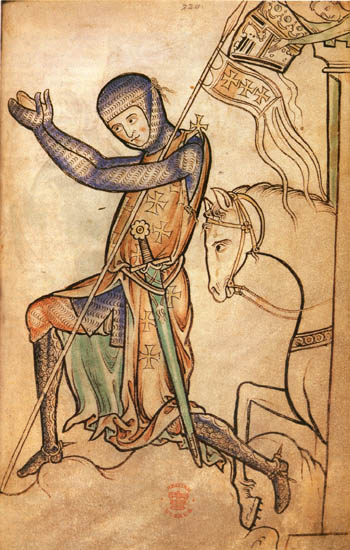 2. Pray the Liturgy of the Hours in the family. This is perhaps the single most important item. Where possible the father, as head of the family, should lead the prayer and it should be sung. Wherever possible the psalms should be sung and the prayer should be oriented towards sacred image or images. Interestingly, I made some suggestions to this person who asked my about how he might sing compline with his children. I sang some very simple tones which he recorded on his laptop so that he could learn them (they were from the selection I developed myself with instructional videos, here). Then I showed him how to point any psalm so that any of these tones could be applied to them. He told me later that his children loved to sing the psalms and were competing for turns to sing on their own.
2. Pray the Liturgy of the Hours in the family. This is perhaps the single most important item. Where possible the father, as head of the family, should lead the prayer and it should be sung. Wherever possible the psalms should be sung and the prayer should be oriented towards sacred image or images. Interestingly, I made some suggestions to this person who asked my about how he might sing compline with his children. I sang some very simple tones which he recorded on his laptop so that he could learn them (they were from the selection I developed myself with instructional videos, here). Then I showed him how to point any psalm so that any of these tones could be applied to them. He told me later that his children loved to sing the psalms and were competing for turns to sing on their own.
3. As soon as possible learn to chant. Even if it is the simplest form of chant, and introduction to the eight modes will benefit the child more than conventional music, I believe. The intervals and harmonious relationship that are traced out in music impress upon the soul the essential patterns that comprise the beauty of the cosmos and which ultimately point, to use the phrase of Cardinal Ratzinger in the Spirit of the Liturgy, to the 'mind of the Creator'. Conventional music contains only two of the modes and so if the child is only exposed to the major and minor keys, no matter how beautiful the music, they will have a limited educational benefit.
What is Culture?
 When I teach my class at Thomas More College I use a definition I heard in a talk from Fr Rob Johannson of the Diocese of Kalimazoo in Michigan about the Evangelisation of the Culture. He described it as that activity of man that reflects and in turn nurtures the core beliefs, values and priorities of the society. It is derived from the Latin word for field because traditionally it was always seen as something that has to be nurtured in order to preserve those core values, and hence preserve the society.
When we ponder on this, we can see that all activity of man constitutes the culture. It is not just high art, it is the most mundane activities - how we pick up a knife and fork when eating, how do we design our road signs...even how do we drive. And here's another critical point: given that free will is involved, how we do these things can potentially be destructive to society, as well as constructive. I have never held the view, for example, that we must return to an agrarian society. Industrialisation, as high-tech as you like, can be a beautiful thing if it is the product of a truly Christian society. The reason that we tend to assume that it is intrinsically desctructive is that the industrialisation of the West has taken place in post Enlightenment society and so reflects that worldview - the result is ugliness and suffering. But it need not be so. The goal, I believe, is to transform what we have for the better, not to wipe the slate clean an try to go back in time. It is interesting to note, that modern agriculture bears the characteristics of factory more than the idyllic agrarian scene that we associate with the ancient and carefully preserved farmland of Europe that was given it's characteristic look long before the modern age.
When I teach my class at Thomas More College I use a definition I heard in a talk from Fr Rob Johannson of the Diocese of Kalimazoo in Michigan about the Evangelisation of the Culture. He described it as that activity of man that reflects and in turn nurtures the core beliefs, values and priorities of the society. It is derived from the Latin word for field because traditionally it was always seen as something that has to be nurtured in order to preserve those core values, and hence preserve the society.
When we ponder on this, we can see that all activity of man constitutes the culture. It is not just high art, it is the most mundane activities - how we pick up a knife and fork when eating, how do we design our road signs...even how do we drive. And here's another critical point: given that free will is involved, how we do these things can potentially be destructive to society, as well as constructive. I have never held the view, for example, that we must return to an agrarian society. Industrialisation, as high-tech as you like, can be a beautiful thing if it is the product of a truly Christian society. The reason that we tend to assume that it is intrinsically desctructive is that the industrialisation of the West has taken place in post Enlightenment society and so reflects that worldview - the result is ugliness and suffering. But it need not be so. The goal, I believe, is to transform what we have for the better, not to wipe the slate clean an try to go back in time. It is interesting to note, that modern agriculture bears the characteristics of factory more than the idyllic agrarian scene that we associate with the ancient and carefully preserved farmland of Europe that was given it's characteristic look long before the modern age.
 Here is a passage that I read in the Office of Readings on May 1st, the Feast of St Joseph the Worker. It is from the pastoral constitution on the Church in the modern world of the Second Vatican Council and has the subtitle 'The worldwide activity of man'. This describes the idea of all activities of man giving glory to God, just as the cosmos - the rest of His creation - does through its beauty and grace. Furthermore, that the cosmos is made better by this activity. It stresses the need for a connection between the faith and the wider culture. This goes back to liturgical reform, so that our participation in the liturgy, which I feel must include the liturgy of the hours, engages the whole person and then the Divine Beauty is impressed upon our souls and inclines us to order all our activities to it.
Here is a passage that I read in the Office of Readings on May 1st, the Feast of St Joseph the Worker. It is from the pastoral constitution on the Church in the modern world of the Second Vatican Council and has the subtitle 'The worldwide activity of man'. This describes the idea of all activities of man giving glory to God, just as the cosmos - the rest of His creation - does through its beauty and grace. Furthermore, that the cosmos is made better by this activity. It stresses the need for a connection between the faith and the wider culture. This goes back to liturgical reform, so that our participation in the liturgy, which I feel must include the liturgy of the hours, engages the whole person and then the Divine Beauty is impressed upon our souls and inclines us to order all our activities to it.
Here is the passage:
"Man, created in God’s image, has been commissioned to master the earth and all it contains, and so rule the world in justice and holiness. He is to acknowledge God as the creator of all, and to see himself and the whole universe in relation to God, in order that all things may be subject to man, and God’s name be an object of wonder and praise over all the earth.
The Psalms and the Evangelisation of the Culture
 I recently read The Liturgical Altar by Geoffrey Webb. Originally written in 1936 and republished just last year, this has been referred to a number of times by New Liturgical Movement writers. I was reading it, as one might expect, to try to find out more about the design of altars, but a short section at the end where he discusses general principles caught my eye.
I recently read The Liturgical Altar by Geoffrey Webb. Originally written in 1936 and republished just last year, this has been referred to a number of times by New Liturgical Movement writers. I was reading it, as one might expect, to try to find out more about the design of altars, but a short section at the end where he discusses general principles caught my eye.He wrote: ‘Anyone familiar with what remains of the forms of liturgical art in England before the break in religion in the sixteenth century must be impressed with one characteristic feature in it. Its beauty appears to share with the wild flowers, and with all the natural order, that absence of toil and effort to which Our Lord Himself drew attention in the lilies of the field. Beauty is an essential attribute of God; and some visible reflection of it would seem to be an inevitable accompaniment of any true worship of God, whenever the spirit of the Liturgy is allowed to give a form to the arts. At certain periods in the Church’s history this visible beauty overflows into all the arts of everyday life. This is the case when the Church can so permeate a whole civilization that she is free to distribute other benefits over and above the one essential blessing of Faith. At such times, education, in the sense of formation of good taste and sound judgment, becomes the common property of the whole community; and the common things of daily use seem to share in the unself-conscious beauty of nature…Beauty, unless ruled by the Cross, generates the seeds of its own destruction.’
Geoffrey Webb is describing a time when the culture of faith and the wider culture reflect common values. This wider culture might be thought of as the everyday practices of living that reflect, and in turn reinforce, the values, priorities and beliefs of a society. He mentions the 12thcentury, but the same could be said of all of the period up to the end of the gothic and then after the High Renaissance in the baroque period. The culture that came out of the Church’s counter-Reformation, the 17th century baroque, was so powerful that it was adopted by the protestant countries of Europe as well.
If the link between the culture of faith and the wider culture is broken so that it reflects values other than those of the faith, you have an unstable situation. The two cannot sit side by side and without affecting each other. A Catholic social ghetto is not the answer, for even the most cloistered monk cannot help but be affected by the society in which he lives. In time cross-fertilisation will occur and the stronger will dominate and eventually overcome the weaker. Either faith will affect the culture and evangelise it; or the wider culture will infect culture of faith and then destroy faith itself.
The need to to repair the bridge between the wider culture and culture of faith in order to evangelize the culture, was impressed upon me just last year by visiting lecturer at Thomas More College of Liberal Arts, Fr. Rob Johansen (of the diocese of Kalamazoo, and currently working on his Licentiate in Liturgy at the Liturgical Institute at Munderlein.) He spoke eloquently of how the culture not only reflects, but also reinforces the 'values, priorities and beliefs' of society.
 After the Englightenment, Pope Benedict tells us in the Spirit of the Liturgy, such a dislocation occurred and this break has remained ever since. The wider culture stepped away from the culture of faith. It became one that reflected and reinforced the values, priorities and beliefs of an Enlightenment influenced worldview. There were two responses he says: one was to try to create Catholic social ghettoes that shut out mainstream culture and both were inadequate. This created an attitude of ‘historicism’ which was an unthinking and sterile attempt to recreate an idealized past. Inevitably, this approach is doomed to failure because the culture of faith is not seeking to engage and overcome the wider culture, but to escape from it. The wider culture will hammer away at the church door until it finds a weakness in the defenses and floods in. This is precisely what happened, it seems to me, after Vatican II. The intention was to open the doors and the let the Faith out to evangelise the world, but in the end the opposite happened. To blame were the improper implementation of the Council (covered may times in this site); and the other tendency described by Pope Benedict in response to the dislocation of culture: that of attempting to compromise the culture of faith with the secular culture. Secular culture is strong in reflecting the practices, beliefs and values of what is bad (eg the Enlightenment). Trying to use this to promote what is good, just results in an impotence. In the context of art, trying to portray something good with the visual vocabulary of despair either creates, in my judgement, inappropriately ugly Christian art; or else in trying to remove the ugliness, leaves the artist with a visual tool set robbed of any power at all, which produces a weak, sentimentalism – kitsch. Neither does anything to stop the erosion of the values of the Faith and the progress of the secular worldview.
After the Englightenment, Pope Benedict tells us in the Spirit of the Liturgy, such a dislocation occurred and this break has remained ever since. The wider culture stepped away from the culture of faith. It became one that reflected and reinforced the values, priorities and beliefs of an Enlightenment influenced worldview. There were two responses he says: one was to try to create Catholic social ghettoes that shut out mainstream culture and both were inadequate. This created an attitude of ‘historicism’ which was an unthinking and sterile attempt to recreate an idealized past. Inevitably, this approach is doomed to failure because the culture of faith is not seeking to engage and overcome the wider culture, but to escape from it. The wider culture will hammer away at the church door until it finds a weakness in the defenses and floods in. This is precisely what happened, it seems to me, after Vatican II. The intention was to open the doors and the let the Faith out to evangelise the world, but in the end the opposite happened. To blame were the improper implementation of the Council (covered may times in this site); and the other tendency described by Pope Benedict in response to the dislocation of culture: that of attempting to compromise the culture of faith with the secular culture. Secular culture is strong in reflecting the practices, beliefs and values of what is bad (eg the Enlightenment). Trying to use this to promote what is good, just results in an impotence. In the context of art, trying to portray something good with the visual vocabulary of despair either creates, in my judgement, inappropriately ugly Christian art; or else in trying to remove the ugliness, leaves the artist with a visual tool set robbed of any power at all, which produces a weak, sentimentalism – kitsch. Neither does anything to stop the erosion of the values of the Faith and the progress of the secular worldview.
 Inset into the text are examples of each. First a crucifixion from 1912 by Emile Nolde, which reflects the style of the mainstream art movement of the time. Second, left, we have a modern prayer card in which the artist, in my opinion, relies to heavily on sentiment. It is lacking an authentic Christian visual vocabulary that exists within, for example the baroque, and so is unable to communicate its message with vigour.
Inset into the text are examples of each. First a crucifixion from 1912 by Emile Nolde, which reflects the style of the mainstream art movement of the time. Second, left, we have a modern prayer card in which the artist, in my opinion, relies to heavily on sentiment. It is lacking an authentic Christian visual vocabulary that exists within, for example the baroque, and so is unable to communicate its message with vigour.Writing in 1936, Geoffrey Webb says that his ideal of divine beauty is absent in both secular and liturgical art. Liturgical art has, he says, ‘lost the spontaneous and creative spirit, and that feeling for the beauty of nature which is so characteristic of the Psalms.’ In other words, the culture of faith has been infected by the wider culture. Contrast this with the power and vigour of the third painting inset into the text, Anthony Van Dyck's St Peter, from the baroque period, the 17th century.
What is the answer, how can we establish a vibrant culture of faith that engages with the wider secular culture without compromise and evangelises it? The answer, I believe, comes down to the way that each of us lives our daily lives. If our day-to-day activities reflect a Catholic culture then it will be stronger and more attractive than anything the secular world has to offer. This is the via pulchritudinis – The Way of Beauty - referred to recently by Pope Benedict and when we march ahead confidently on this path, we can all be the ambassadors of cultural renewal and the New Evangelisation. It is to ourselves we must look first.
 What can we do so that our daily actions reflect that ‘unconscious beauty of nature’ governed by ‘the cross’ to quote Webb? The first step is the creation of an authentic culture of faith plus an education in beauty. The most powerful means of achieving both is the same. The most important educator in these respects is the liturgy. Cultural reform stems from liturgical reform.
What can we do so that our daily actions reflect that ‘unconscious beauty of nature’ governed by ‘the cross’ to quote Webb? The first step is the creation of an authentic culture of faith plus an education in beauty. The most powerful means of achieving both is the same. The most important educator in these respects is the liturgy. Cultural reform stems from liturgical reform.
The beauty that Webb is describing is the beauty of the cosmos. The rhythms and patterns of the cosmos reveal those of the heavenly liturgy, and the earthly liturgy, which mirrors it too, is a supernatural step into this place of heavenly beauty. In developing our intuitive sense of this, the Liturgy of the Hours is so important. The Mass is a jewel in its setting, which is the Liturgy of the Hours. The Liturgy as a whole is a jewel in its setting which is the cosmos. Man’s work is an adornment to the cosmos, which can, through God’s grace, raise it up to something greater. The Liturgy of the Hours is the connecting door that both reveals more fully the beauty of the cosmos so that our work can conform to it (it ‘sanctifies our work’); and deepens for us our active participation in the sacrifice of the Mass and the Trinitarian dynamic of love that is worship of the Father, through the Son, in the Spirit.
And as Webb points out, the psalms which are at the core of the Divine Office contain this cosmic beauty. They describe it and conform to it at every level. They even describe for us the context into which they should be placed when praying them by telling us how many times a day we should pray them (seven times and once at night). When we do this, we place the psalms in an external setting that conforms to that heavenly beauty which is the pattern of the liturgical days, weeks, seasons and year; and ordering our lives to this pattern impresses upon our hearts the essence of the beauty of the cosmos which reveals to us ‘the Glory of the Lord’. I have written a number of articles that explore in greater depth the connection between liturgy, proportion, number and beauty, here.
The Liturgical Altar by Geoffrey Webb, originally published in 1936, republished by Romanitas Press, Kansans City, MO, 2010


How to Be the Salt of the Earth! Learn from Mum and Dad
The family is the place that teaches us how even the mundane activities of everyday life such as handiwork, cooking, cleaning, repairing, gardening can be done beautifully, with grace. When our work is graceful, it becomes a powerful example that demonstrates to others how to sanctify all that we do. Our own knowledge of how to do this comes from inspiration, as with all activities, but also we are taught through the example of others, and traditionally the most powerful example is that of our parents. Through this we develop as young children the habit of graceful living that permeates all that we do in later life. This is such an important part of how we establish a culture of beauty in our society, and are formed to be the ambassadors of the New Evangelization, arousing curiosity and attracting people to the Faith through the grace and beauty of what we do.
We live in a world in which many children do not see the example of this in their parents. Faced with this schism between the culture (in the broadest sense of the word) and the Faith, how do set about restoring the connection? The liturgical life of individuals and then families is vital. And important to this is the restoration of the idea of the father as head of the
family, who leads prayer and is the advocate for the family to God. I have written about this here. We are told that the height of family prayer is the Liturgy of the Hours, which sanctifies our work.
The principle of tradition is the means by which we pass on these values. It is a respect for what is good and an openness to receive from the past what is good. Tradition can govern not only the life of prayer, but also the ordinary activities of life. The family is driving force for tradition. Parents pass on to their children how to do the ordinary things in life. If you want to change a society fundamentally, then the things to attack are the principle of tradition and the family as fundamental building block of society. This is what has happened in the West.
So much of this is not done any more. Liela Lawler who writes her charming blog Like Mother Like Daughter is tackling this head on. She discusses how to do the ordinary things in life that parents used to teach their children. Some are rediscovered and now being passed on again in the light of her experience, some were passed on to her. She gives us the details that come from that personal experience which makes it practical, at times very amusing, and always interesting and readable. However, don't be beguiled by her light touch in the telling of the story. This is powerful stuff because it is rooted in the spiritual life. The articles cover anything that a family can do and just like a family, so just picking something out at random, we have Bees and Peas - Two DIYers Puttering Around; or Make Knitting Needles: a Tutorial.
She is always quick to emphasis the how the prayer life of the family in binds it together and is the means by which the ordinary and mundane activities can be an expression of the good, the true and the beautiful. She has just written a piece about the importance of ritual in family prayer that I would encourage everyone to read, whether or not you have family! Take a look at here posting, Beginning a Simple Life of Prayer with the Children.
Leila always includes photographs of her family home illustrating perfectly what she is talking about. The photos on this piece are all hers.
I finish with a quote from Compline, Sundays and Solemnities II. Deuteronomy 6:4-7: "Hear O Isreal: the Lord our God is one Lord; and you shall love the Lord your God with all your soul, and with all your might. And these words which I command you this day shall be upon your heart; and you shall teach them diligently to your children, and shall talk of them when you sit in your house, and when you walk by the way, and when you lie down, and when you rise."
How Do We Revive the Gothic?
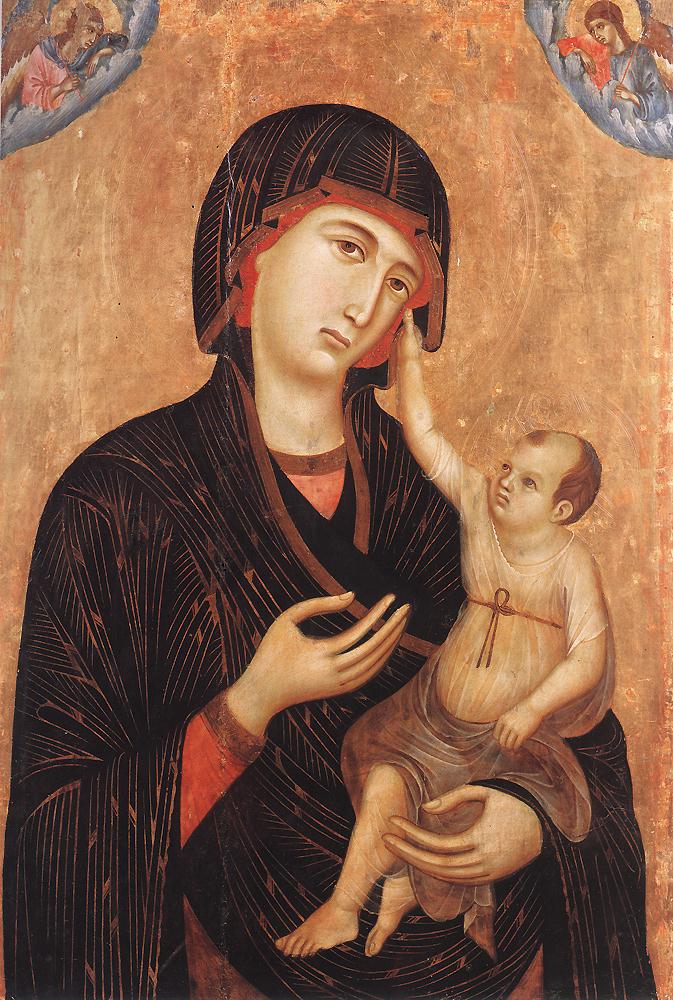 When I was given the courage to follow my dream of being an artist (by some inspired vocational guidance 20 years ago) I wanted to paint like the Italian gothic artist Duccio. My reasons were based upon personal preference rather than a deep knowledge of Catholic liturgical art. It was just that I loved what I saw when I went to the National Gallery in London: it had enough naturalism to make it accessible, and enough idealism that gave it a sense of the sacred. It was later that I read The Spirit of the Liturgy in which the then Cardinal Ratzinger wrote of the gothic an authentic liturgical tradition.
Once I had decided I wanted to paint like him, it raised the problem of how to learn to do so. I didn't want to create pastiche, but to learn in such a way that it might become my natural way of painting and so if required, I could paint new works of art in this style. The problem was that as far as I was aware, this was not a living tradition and there wasn’t any practising artist who could teach me.
When I was given the courage to follow my dream of being an artist (by some inspired vocational guidance 20 years ago) I wanted to paint like the Italian gothic artist Duccio. My reasons were based upon personal preference rather than a deep knowledge of Catholic liturgical art. It was just that I loved what I saw when I went to the National Gallery in London: it had enough naturalism to make it accessible, and enough idealism that gave it a sense of the sacred. It was later that I read The Spirit of the Liturgy in which the then Cardinal Ratzinger wrote of the gothic an authentic liturgical tradition.
Once I had decided I wanted to paint like him, it raised the problem of how to learn to do so. I didn't want to create pastiche, but to learn in such a way that it might become my natural way of painting and so if required, I could paint new works of art in this style. The problem was that as far as I was aware, this was not a living tradition and there wasn’t any practising artist who could teach me.
I had a sense that historically, the gothic was a transitionary phase between the iconographic and the classical naturalism of the High Renaissance/Baroque (transmitted through the ‘academic method’ of the academies and ateliers). The methods of both of these traditions were still just about alive, I knew, if not always applied in the full glory of the past. So I decided to seek a training in both traditions and hoped that through this, somehow, I would be able to take elements from both and patch together my own gothic style.
This twin training was extremely valuable to me to this end, but not in the way I had imagined. Rather than learning stylistic elements from two traditions that I could combine to create a hybrid, I learnt how a tradition preserves and passes on its core principles and so was able to see how the gothic could be reestablished as a tradition in its own right, without reference to the other two if necessary.
Both the academic and iconographic methods emphasized the importance of two aspects in the training: first the observation from nature and second the copying, with understanding, of masters in that tradition. The balance of these two aspects was different in each tradition (with the emphasis on observation from nature much stronger, as one would expect, in the naturalistic tradition).
 This aspect of understanding when copying is important. Aidan Hart, my teacher, always stressed this strongly. When we studied an icon, he would relate the form of the painting to both the natural form and the theology. Take the example of the eyes: he pointed out that the eyes in an icon have no glint. This is because a glint is reflected light, and this is absent in the icon because it portrays eschatological man who shines with uncreated light which is stronger than the reflected light.
This aspect of understanding when copying is important. Aidan Hart, my teacher, always stressed this strongly. When we studied an icon, he would relate the form of the painting to both the natural form and the theology. Take the example of the eyes: he pointed out that the eyes in an icon have no glint. This is because a glint is reflected light, and this is absent in the icon because it portrays eschatological man who shines with uncreated light which is stronger than the reflected light.
Sometimes he would point out features that might seem at first glance to be an arbitrary stylization but were in fact related to natural form. For example, the dark line above the eye is the deepest point. Below it, the eyeball is curving forward out of the orbit and above it the skull coming out from the orbit towards the brow. (This line only appears in nature if we have deep set eyes.) To accentuate this as a shadow line it is often painted as a red or red-brown shadow line. A warm, reddish shadow is often used in the deepest shadow of flesh even when painting naturalistically (this is what I was taught to do when I was studying in portrait painting in Florence).
So from this lesson I learnt that if I want to learn any tradition, I must learn to draw skillfully from nature as well as copy masters. If I want to paint figures in the style of musclebound superheroes, I would sign up for life drawing classes and copy lots of pictures of Spiderman and Superman. Similarly, if I want to paint like Duccio I can copy his work, while considering how the style relates to the theology; and (as we know the gothic masons did from their surviving manuscripts) draw from nature.
 The study of iconography taught me that a tradition can be reestablished as living tradition successfully, even if the line of tradition has been broken. The Enlightenment affected the culture in both East and West and this caused a break in the iconographic tradition. The iconography which we see today is a living tradition that was reestablished in the 20th century through the devoted work of Greek and Russian iconographers and scholars. These pioneers analysed the tradition for its essential elements, and then sought to account for these by relating them to theology of eschatological man. (The work has not been done yet. It has been developing and changing even in the time that I have been exposed to icons over the last 20 years.)
The study of iconography taught me that a tradition can be reestablished as living tradition successfully, even if the line of tradition has been broken. The Enlightenment affected the culture in both East and West and this caused a break in the iconographic tradition. The iconography which we see today is a living tradition that was reestablished in the 20th century through the devoted work of Greek and Russian iconographers and scholars. These pioneers analysed the tradition for its essential elements, and then sought to account for these by relating them to theology of eschatological man. (The work has not been done yet. It has been developing and changing even in the time that I have been exposed to icons over the last 20 years.)
A similar process is now going on in in the West, both in regard to re-establishing the Baroque and gothic traditions; and in taking a discerning look at the Orthodox interpretation of the iconographic tradition, which is at times limited by its focus on the Greek and Russian traditions to the exclusion of other iconographic forms, for example the Romanesque or the Celtic forms of iconography.
I am confident therefore of a flowering of Catholic culture, especially when one sees how it is underpinned by the liturgical renewal that is taking place under the guiding hand of the Holy Father.
Images from top: Madonna and Child, Duccio; detail of Christ Pantocrator, 6th century; detail from triple portrait of Charles I, Sir Anthony van Dyck, 17th century.
Below: first, a portrait by yours truly in which the eyes are not deep set and so the line above the lids is not visible. Nevertheless, I used a deep red-brown, as instructed, to give the shadow tone in this naturalistic style. Below those we have large scale, full images of those above.
Another Way to Determine Your Personal Vocation
 Determining Personal Gifts In order to lead a happy life it is very important, it seems to me, to be true to your personal vocation. I have written before, here, about the advice that I was given over 20 years ago, which opened up the way for me to a wonderful life.
The guidance I was given focused strongly on what to do: what is picture of perfect happiness that I envisage for myself? What job, life situation and so on does God intend for me? Having set out this vision, by ordering my activities so that gradually I move towards it, I found that I developed the skills and discovered that I had the gifts necessary to make it happen.
Determining Personal Gifts In order to lead a happy life it is very important, it seems to me, to be true to your personal vocation. I have written before, here, about the advice that I was given over 20 years ago, which opened up the way for me to a wonderful life.
The guidance I was given focused strongly on what to do: what is picture of perfect happiness that I envisage for myself? What job, life situation and so on does God intend for me? Having set out this vision, by ordering my activities so that gradually I move towards it, I found that I developed the skills and discovered that I had the gifts necessary to make it happen.
There is another way of discerning personal vocation that I have discovered recently. This came through my contact with Fr Michael Sweeney, the head of the Dominican School of Philosophy and Theology in Berkeley, California, when I attended a course there that discussed the idea of personal vocation contributing to the overall mission of the Church, the common good.
His focus is on discerning our gifts and special skills, and works on the assumption that if we then seek to employ these in our lives, bit by bit we will be guided towards the appropriate theatre in which to apply them. Each of us has a calling that is our personal contribution to the common good. Every person therefore is given a unique set of gifts by the Holy Spirit – charisms he called them – that will enable us to fulfill that vocation and so lead of life Christian joy. When we exercise those gifts we do so with a special authority as assigned to our unique position with the Church, in my case it is the Lay Office. These gifts can be things we often associate with the lives of the saints – for example the gift of leading a life of poverty for the greater glory of God. Or they can be very practical things: art, music, writing or teaching. They can also be special skills that those of us who don’t have them find it difficult to imagine anyone feeling fulfilled doing, such as the charism of administration. In connection with this, one of the things that struck me about St Ignatius of Loyola is that after he created the Jesuit order he spent most of his time quietly in Rome administering the growth of his organization. Other Jesuits, such as St Francis Xavier, were the great missionaries of the organization.
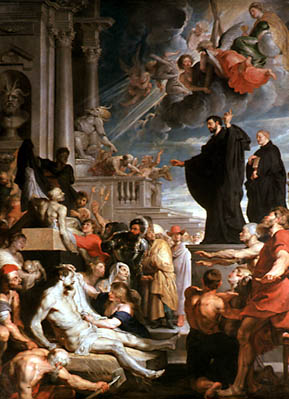 When I became a Catholic one of the things that attracted me to the Faith was the belief that this offered the way to greatest happiness. My friend David who was instrumental in bringing me into the Church always stressed how certain he was that God wanted me to be happy. When I got into the Church I realized, judging from the way they talk about their lives and their faith that not all faithful Catholics are aware of this. I have never subscribed to a view that life is something that we put up with while we await eternal bliss in heaven. Rather, eternal life starts here and now and by degrees we can experience that heavenly form of existence in this life (though not fully until we die).
When I became a Catholic one of the things that attracted me to the Faith was the belief that this offered the way to greatest happiness. My friend David who was instrumental in bringing me into the Church always stressed how certain he was that God wanted me to be happy. When I got into the Church I realized, judging from the way they talk about their lives and their faith that not all faithful Catholics are aware of this. I have never subscribed to a view that life is something that we put up with while we await eternal bliss in heaven. Rather, eternal life starts here and now and by degrees we can experience that heavenly form of existence in this life (though not fully until we die).
Intrigued by what I heard from Fr Sweeney I decided to go investigate further. Before he moved to Berkeley, Fr Sweeney was working as head of the organization that he founded to enable people to discern these gifts, the Catherine of Siena Institute. I ordered from the Institute their Called and Gifted series of recorded talks. In these Fr Michael and the co-founder Sherri Weddell describe how we can determine these gifts. I recommend them.
As described in the recorded talks, the characteristic of a charism is that it gives you special abilities that achieve great observable results, that are for the good of others and exercising these gifts feels easy and natural (although it may seem extraordinary to others who see the results). Most importantly, when exercising these charisms, we feel fulfilled. The Catherine of Siena process of discerning charisms (and you can have more than one) involves a guided examination of one’s past experience for signs of the workings of a charism. These gifts can be in very practical things, such as art, music or craftsmanship. They can be in more intellectual pursuits such as teaching or learning. They can also be in what we would probably more commonly associated with the word ‘charismatic’ in the context of the Church, such as a gift of evangelization.
I should declare hear that I have never been attracted to what I have seen of what is commonly referred to as charismatic Christianity, Catholic or otherwise. It always seems to me that there is too much emphasis on emotion and not enough on reason. What appeals to me in this approach to discerning them is that it is systematic and rational. There is no arm waving (with or without tambourine) or hysteria.
As a result of this process, it has not changed the my life direction particularly. I was not expecting this as I already feel that I am doing what want to do. However, it has changed my sense of how I should aim to achieve what I want to do. It has been revealing and helpful to me.
Also, it has immediately made more conscious of differing individual strengths and weaknesses. I can see now why I find some things very easy that others find difficult and so I can see that I ought to be more understanding when dealing with them. Similarly, it has made me less frustrated at myself in other respects. It has been obvious to me that there are things that seem to come naturally to so many people. It increases my awareness, I feel, that we all need each other to cooperate in working towards the common good.
I close with a quote from St Cyril of Jerusalem. What he says applies to all charisms, not just those he mentions specifically. It comes from the Office of Readings Monday Week 7 Eastertide, a few days before Pentecost:
“Although the Spirit never changes, the effects of his action, by the will of God and in the name of Christ, are both many and marvellous. The Spirit makes one man a teacher of divine truth, inspires another to prophesy, gives another the power of casting out devils, enables another to interpret holy Scripture. The Spirit strengthens one man’s self-control, shows another how to help the poor, teaches another to fast and lead a life of asceticism, makes another oblivious to the needs of the body, trains another for martyrdom. His action is different in different people, but the Spirit himself is always the same. In each person, Scripture says,the Spirit reveals his presence in a particular way for the common good.
"The Spirit comes gently and makes himself known by his fragrance. He is not felt as a burden, for he is light, very light. Rays of light and knowledge stream before him as he approaches. The Spirit comes with the tenderness of a true friend and protector to save, to heal, to teach, to counsel, to strengthen, to console. The Spirit comes to enlighten the mind first of the one who receives him, and then, through him, the minds of others as well.”
Art work: first, third and fourth are all the Calling of Ss Peter and Andrew by Duccio, Pietro Da Cortona (C17th) and Bernardo Strozzi (C16th) respectively. The second is The Miracles of St Francis Xavier by Rubens (C17th).
The Liturgy and Community
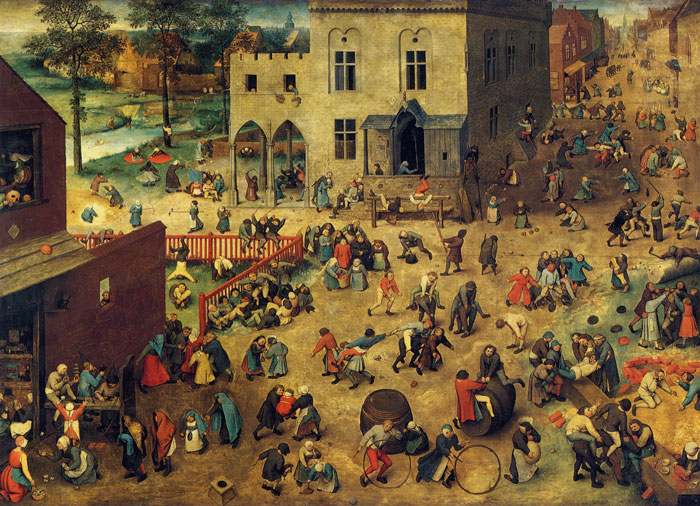 Our own sense of who and what we are is based upon the relationships we have with others. If you go around a group of people and ask them to describe themselves, apart from their name they will talk about themselves in terms of their relationships with others: for example, ‘I work with this company’, ‘I am a father and I have three children’. This is the essence of a person, as distinct from an individual. A human person is always in relation with others, starting from birth. No one, by choice, disengages from society altogether (not even a hermit) and is happy.
This understanding of the human person has a profound effect on how we view what society is. A relationship of the sort we are now envisioning is always between two subjects, that is two people freely cooperating as moral agents. This is termed covenantal and is based upon mutual self-sacrifice on behalf of the other - love. This freedom to respond as a person is one of the essential elements of society. Society therefore is the vector sum of the relationships within it. It is not a collective of self-contained individuals.
Our own sense of who and what we are is based upon the relationships we have with others. If you go around a group of people and ask them to describe themselves, apart from their name they will talk about themselves in terms of their relationships with others: for example, ‘I work with this company’, ‘I am a father and I have three children’. This is the essence of a person, as distinct from an individual. A human person is always in relation with others, starting from birth. No one, by choice, disengages from society altogether (not even a hermit) and is happy.
This understanding of the human person has a profound effect on how we view what society is. A relationship of the sort we are now envisioning is always between two subjects, that is two people freely cooperating as moral agents. This is termed covenantal and is based upon mutual self-sacrifice on behalf of the other - love. This freedom to respond as a person is one of the essential elements of society. Society therefore is the vector sum of the relationships within it. It is not a collective of self-contained individuals.
A human relationship is an entity in itself. Two people create, through the properly ordered love between them, a relationship that is distinct from each person, and does not destroy either’s integrity.
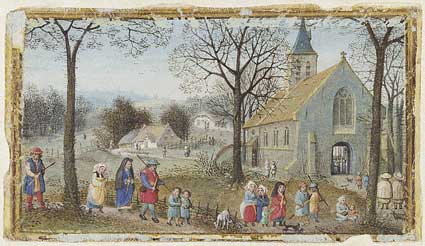 It is analogous, I think, to a chord created by two notes played simultaneously. We perceive the chord as something distinct created by the proximity of two notes, but the integrity of each note is not diminished by it. Something has been created out of nothing. This creation out of nothing is ‘superabundance’; love is always superabundantly fruitful (an example is the creation of the third person in a family). A loving relationship is created out of the harmony that exists between two hearts when each acts for the good of the other. There is a song (by U2 I think) that describes love as two hearts beating ‘as one’. In fact it might be more accurate to say that when love is present, two hearts beat not as one, but as three.
It is analogous, I think, to a chord created by two notes played simultaneously. We perceive the chord as something distinct created by the proximity of two notes, but the integrity of each note is not diminished by it. Something has been created out of nothing. This creation out of nothing is ‘superabundance’; love is always superabundantly fruitful (an example is the creation of the third person in a family). A loving relationship is created out of the harmony that exists between two hearts when each acts for the good of the other. There is a song (by U2 I think) that describes love as two hearts beating ‘as one’. In fact it might be more accurate to say that when love is present, two hearts beat not as one, but as three.
By using the word ‘love’ I do not always have in mind profoundly deep relationships. Any relationship, however casual, can reflect a motive for the good of the other. Even a cheery hello to a shopkeeper can reflect either a loving or self-centred motive. This means that whatever I do I bring to the party, so to speak, an aspect of every relationship that I have. I represent to some degree every community of which I am part – family, work, parish, tennis club and so on.
Liturgical activity is an act of love, in which I participate in the sacrifice made by Christ for all humanity. In participation of this supreme act of love is a transforming experience that by degrees changes me and makes me a better lover (and God knows, there is much room for improvement). This means that through every relationship I have, every other person and community with whom I relate benefits profoundly from my participation. Participation in the liturgy is a sacrifice of love their behalf. The effect is through what one hopes subsequently might be a more loving direct interactions with each person; but also because I am transformed through this participation, the relationship that exists between us and my prayers and intentions for them in the liturgy facilitate a supernatural transformation to the same degree and through my intentions for those people in the liturgy.
 The liturgy therefore is the binding principle of society and those communities in which I participate. Family, friends, parish, Church, workplace, living quarters, country – will all benefit from my participation in the liturgy. This is so even when I am the only person who is doing this and no one else knows of my participation. When I go to Mass or pray the liturgy of the hours, I try to remember to consciously dedicate that day’s prayer to all those groups and individuals with whom I relate.
The liturgy therefore is the binding principle of society and those communities in which I participate. Family, friends, parish, Church, workplace, living quarters, country – will all benefit from my participation in the liturgy. This is so even when I am the only person who is doing this and no one else knows of my participation. When I go to Mass or pray the liturgy of the hours, I try to remember to consciously dedicate that day’s prayer to all those groups and individuals with whom I relate.
There is a maxim that the family that prays together, prays together. In the encyclical Marialis Cultus (On the Right Ordering and Development of Devotion to the Blessed Virgin Mary), as well as describing how praying with Christ in the Liturgy is the fullest expression of devotion to Mary, Paul VI calls the Liturgy of the Hours the 'highpoint which family prayer can reach'.(54)
By extension, I suggest, this is true for all communities. The benefit of this liturgical participation in the sacrifice of Christ is magnified if the community prays in community. Unless its raison d’être is communal prayer it is rare that in any community every single member can or would even want to pray regularly with his fellows. But by degrees it is possible to move towards this ideal anywhere. If practicalities allow (and we must be aware that often they will not) a visible posting of regular times that the Liturgy of the Hours is prayed with an invitation for any member to join, would invoke the public nature of liturgy. If that invitation extends to the general public to attend the community prayer, the better still. At Thomas More College we are lucky to have priests who can say daily Mass; in addition a core of devotees to the Liturgy of the Hours have organized a rota by which we do our best to ensure that two or three of us at least pray Lauds and Vespers each day for the community.
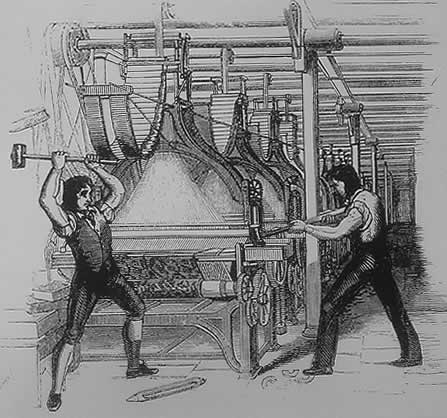 Culture reflects the cult that is at the core of it. However modest the fulfilment of this ideal, this is the means by which the culture of community or organization can be transformed to a Catholic culture that will be in harmony with all other institutions and social groups and work for the common good. It is no surprise, therefore, that any organization, such as many businesses which typically give no thought to liturgical piety at all, reflect a secular culture. So much so, that it doesn’t even occur to many people that the workplace can be or can even aspire to be a community. Consequently it is taken for granted that while it might contribute to the financial support of the families who work there, that it is intrinsic to business that it will undermine the family (for example through demands of time) and so many other aspects of an ordered culture. I do not accept this.
Culture reflects the cult that is at the core of it. However modest the fulfilment of this ideal, this is the means by which the culture of community or organization can be transformed to a Catholic culture that will be in harmony with all other institutions and social groups and work for the common good. It is no surprise, therefore, that any organization, such as many businesses which typically give no thought to liturgical piety at all, reflect a secular culture. So much so, that it doesn’t even occur to many people that the workplace can be or can even aspire to be a community. Consequently it is taken for granted that while it might contribute to the financial support of the families who work there, that it is intrinsic to business that it will undermine the family (for example through demands of time) and so many other aspects of an ordered culture. I do not accept this.
This suggests though that any attempt to change things in a community or organization that does not consider its culture and what culture really is will be dealing with symptoms not causes; and the problems even if apparently solved will eventually reappear elsewhere or in a different form. It is like the Tom and Jerry cartoons when Tom has hit on the head with a giant mallet and has a huge bump on his head. In response he puts his hand on the top of it and pushes it down until the scalp is once again smooth. The only problem is that as the first bump diminishes, a second appears on the side of his head and grows. The end result is that the bump has simply moved. Most organizational change I have seen in the workplace has struck me as bump moving, rather than bump healing.
In the end, I suggest, that answer is always the same: to change a culture you must change the cult.
The Way of Beauty and the New Evangelisation
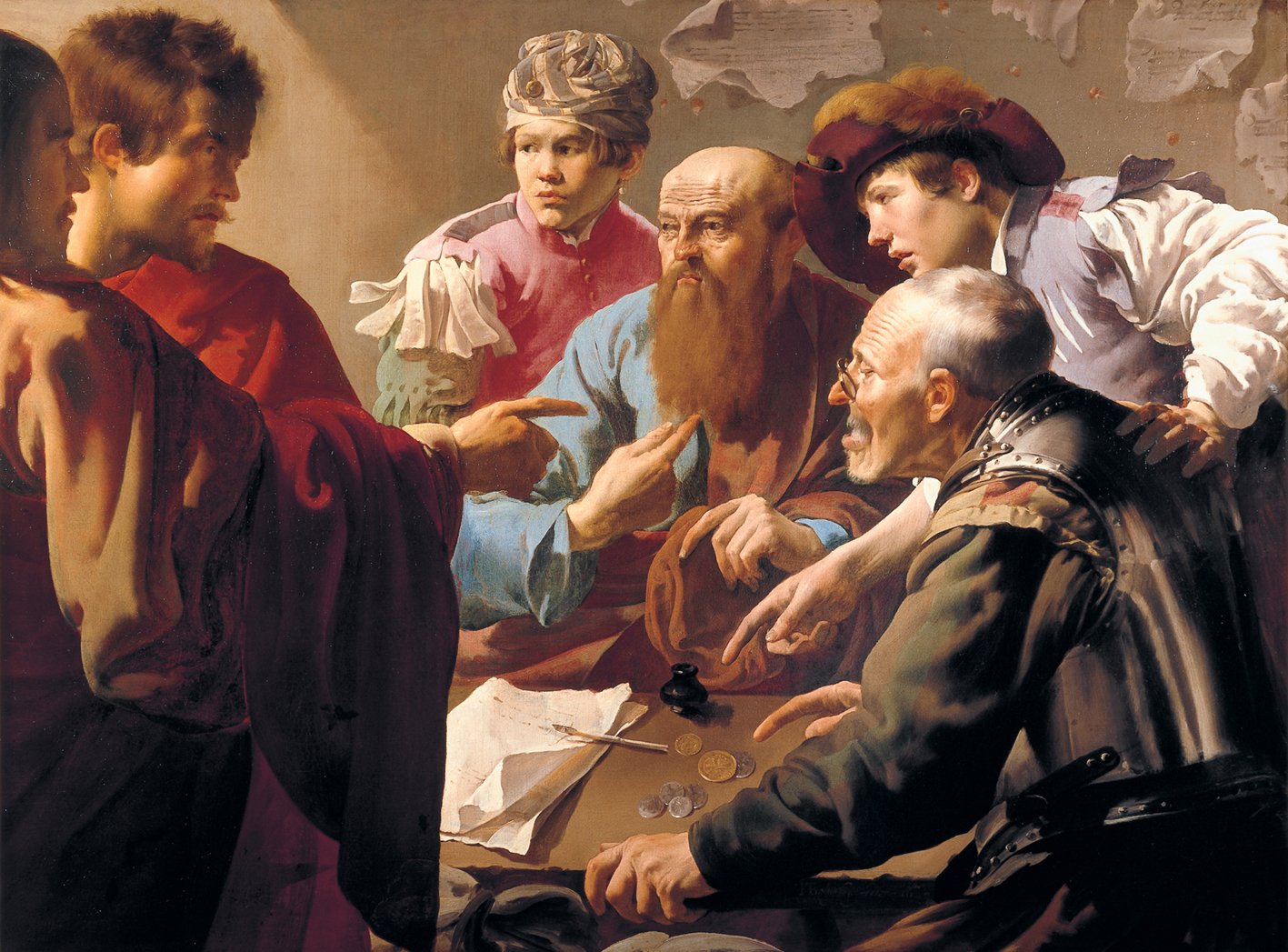 Why an education in beauty and the Liturgy of the Hours are important in the formation of lay people as part of the New Evangelisation. Thomas More College of Liberal Arts was treated to a lecture by a husband-and-wife team of theologians who both teach at St John's Seminary at Boston. David and Angela Franks run the newly established Masters of Theological Studies for the New Evangelization. Although based at the Seminary, this is aimed at lay formation and can be taken on a part-time basis. It is the first new programme of the Seminary's newly established, Theological Institute for the New Evangelisation (TINE).
David and Angela inspired our students (and myself!) with the vision that the Church has for the role of lay people in evangelising the modern world, charactererised by John Paul II as the New Evangelisation. All this is invaluable in itself, but what surprised and interested me particularly was their assertion that an education in beauty is an essential element in the formation of the individual who is going to be carry out their mission of taking the Word to the world. Furthermore, they highlighted the importance of the Liturgy of the Hours in this education.
Why an education in beauty and the Liturgy of the Hours are important in the formation of lay people as part of the New Evangelisation. Thomas More College of Liberal Arts was treated to a lecture by a husband-and-wife team of theologians who both teach at St John's Seminary at Boston. David and Angela Franks run the newly established Masters of Theological Studies for the New Evangelization. Although based at the Seminary, this is aimed at lay formation and can be taken on a part-time basis. It is the first new programme of the Seminary's newly established, Theological Institute for the New Evangelisation (TINE).
David and Angela inspired our students (and myself!) with the vision that the Church has for the role of lay people in evangelising the modern world, charactererised by John Paul II as the New Evangelisation. All this is invaluable in itself, but what surprised and interested me particularly was their assertion that an education in beauty is an essential element in the formation of the individual who is going to be carry out their mission of taking the Word to the world. Furthermore, they highlighted the importance of the Liturgy of the Hours in this education.
They described a process that is both active and reactive. The active role is one of living the life of faith, which is ultimately living the life of love that God intends for us. And we should do so, they said, without apologising for it!
There is a description in the Acts of the Apostles of the growth of the early Church in which people were attracted to the Christian life, we are told, 'because they loved each other'. When we lead a life of love then our lives will be beacons of light that will arouse curiosity in this secular society. Love is not so much a set of feelings but rather a set of actions motivated for the good of the other. That requires fortitude especially because it is precisely this that will cause us to stand out in the crowd and because, as David puts it, we live in an age when 'powerful forces are arrayed against true love'.
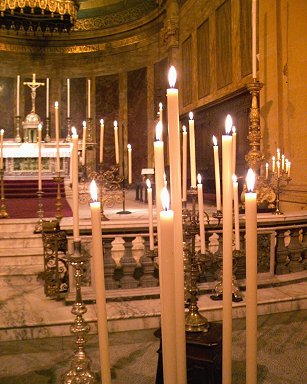 That light will be brightest when we are answering most completely the personal vocation that God has made to us (aside from following the commandments of the Church). The determination of this personal vocation is an important early step therefore. I was lucky in my own life in being given some inspired guidance in trying to discern what this might be. This has ended up in me doing what I am now at Thomas More College. I have described the process here. The programme at the St John's Seminary offers guidance also in this first step.
That light will be brightest when we are answering most completely the personal vocation that God has made to us (aside from following the commandments of the Church). The determination of this personal vocation is an important early step therefore. I was lucky in my own life in being given some inspired guidance in trying to discern what this might be. This has ended up in me doing what I am now at Thomas More College. I have described the process here. The programme at the St John's Seminary offers guidance also in this first step.
The second part is reactive. When people see a life of love it arouses curiosity and they ask questions. At this point we need to be able to answer them truthfully and prudently. Part of the programme at St John's is about equipping people with knowledge of the truth - we must know what the Church teaches, or at the very least, where to go to find out what the Church teaches.
But also, we must present this information in such a way that it continues to attract people. Force of logic will only take you so far. It is not just what you say, but how you say it. Prudence guides this. While knowing what to say and when can be trained in some ways directly, so much of this is about developing an intuitive sense of it. A key principle in operation here is beauty. When we do something attractively, we are doing it beautifully. This is why a training in beauty is so important, we were told. It develops that instantaneous intuitive sense of knowing what to do best.
After the talk there was a lively question and answer session and one student asked directly. What should we be aiming for in our spiritual lives in order to be able to achieve this? To my great delight, David answered without hesitation, that beyond the basic requirements of the sacramental life, he felt that the Liturgy of the Hours was a powerful and 'supremely effective' form of prayer.
David and Angela invite everyone who might be interested to take a look at the exciting opportunities for lay people offered by St John's Seminary. You can find out more by going to the www.sjs.edu and clicking on the 'TINE' logo.
For a growing series of articles about the Liturgy of the Hours as part of The Way of Beauty, see here.
Thomas More College of Liberal Arts offers a traditional education in beauty, incorporating the Liturgy of the Hours as one of the key components of the spiritual life of the college. The course, The Way of Beauty is part of its core curriculum with the intention of offering our students to best chance of coming out as ambassadors of the New Evangelisation.
In addition, our summer programme has short courses open to everyone to teach precisely this. Artists and musicians can learn it in conjunction with the skills of icon painting, academic drawing or Gregorian chant in our two-week programmes in July. Our weekend retreat in creativity and inspiration in August offers everyone else the chance to learn the traditional education in beauty - developed as part of the training of artists - but without having to learn the artistic skills. For more information about all of these courses see here.
Images Top and bottom: The Calling of St Matthew by Hendrick ter Brugghen, 1621; candles at the Birmingham Oratory, England; The Presentation of Jesus at the Temple (Candlemass) by Tintoretto, c1550
Pelican Brief – Should We Aim to Revive All Christian Symbols?
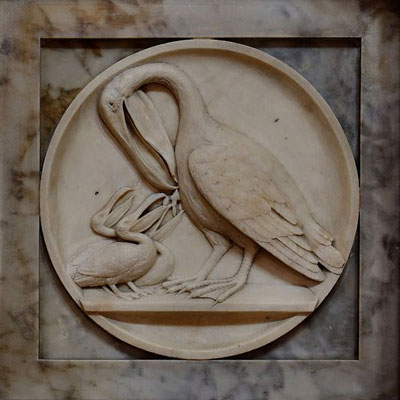 Is there a danger that trying to reestablish traditional Christian symbols in art would sow confusion rather that clarity? Lots of talks and articles about traditional Christian art I see discuss the symbolism of the iconographic content; for example, the meaning of the acacia bush (the immortality of the soul) or the peacock (again, immortality). This is useful if we have a printed (or perhaps for a few of you an original) Old Master in church or a prayer corner as it will enhance our prayer life when contemplating the image. But is this something that we ought to be aiming to reinstate the same symbolism in what we produce today? Should we seek to educate artists to include this symbolic language in their art?
If symbols are meant to communicate and clarify, they should be readily understood by those who see them. This might have been the case when they were introduced – very likely they reflected aspects of the culture at the time – and afterwards when the tradition was still living and so knowledge of this was handed on. But for most it isn’t true now. How many would recognize the characteristics of an acacia bush, never mind what it symbolizes? If you ask someone today who has not been educated in traditional Christian symbolism in art what the peacock means, my guess is that they are more likely to suggest pride, referring to the expression, ‘as proud as peacock’. So the use of the peacock would not clarify, in fact it would do worse than mystify, it might actually mislead. (The reason for the use of the peacock as a symbol of immortality, as I understand it, is the ancient belief that its flesh was incorruptible). So to reestablish this sign language would be a huge task. We would not only have to educate the artists, but also educate everyone for whom the art was intended to read the symbolism. If this is the case, why bother at all, it doesn’t seem to helping very much, and in the end it will always exclude those who are not part of the cognoscenti . This is exactly the opposite of what is desired: for the greater number, it would not draw them into contemplation of the Truth, but push them out.
Is there a danger that trying to reestablish traditional Christian symbols in art would sow confusion rather that clarity? Lots of talks and articles about traditional Christian art I see discuss the symbolism of the iconographic content; for example, the meaning of the acacia bush (the immortality of the soul) or the peacock (again, immortality). This is useful if we have a printed (or perhaps for a few of you an original) Old Master in church or a prayer corner as it will enhance our prayer life when contemplating the image. But is this something that we ought to be aiming to reinstate the same symbolism in what we produce today? Should we seek to educate artists to include this symbolic language in their art?
If symbols are meant to communicate and clarify, they should be readily understood by those who see them. This might have been the case when they were introduced – very likely they reflected aspects of the culture at the time – and afterwards when the tradition was still living and so knowledge of this was handed on. But for most it isn’t true now. How many would recognize the characteristics of an acacia bush, never mind what it symbolizes? If you ask someone today who has not been educated in traditional Christian symbolism in art what the peacock means, my guess is that they are more likely to suggest pride, referring to the expression, ‘as proud as peacock’. So the use of the peacock would not clarify, in fact it would do worse than mystify, it might actually mislead. (The reason for the use of the peacock as a symbol of immortality, as I understand it, is the ancient belief that its flesh was incorruptible). So to reestablish this sign language would be a huge task. We would not only have to educate the artists, but also educate everyone for whom the art was intended to read the symbolism. If this is the case, why bother at all, it doesn’t seem to helping very much, and in the end it will always exclude those who are not part of the cognoscenti . This is exactly the opposite of what is desired: for the greater number, it would not draw them into contemplation of the Truth, but push them out.
I think that the answer is that some symbols are worth persevering with, and some should be abandoned. First, it is part of our nature to ‘read’ invisible truths through what is visible. This does not only apply to painting. The whole of Creation is made by God as an outward ‘sign’ that points to something beyond itself to Him, the Creator. Blessed John Henry Newman put it in his sermon Nature and Supernature as follows: "The visible world is the instrument, yet the veil, of the world invisible – the veil, yet still partially the symbol and index; so that all that exists or happens visibly, conceals and yet suggests, and above all subserves, a system of persons, facts, and events beyond itself.” It is important to both to make use of this faculty that exists in us for just this purpose; and to develop it, increasing our instincts for reading the book of nature and in turn, our faith.
However, coming back to the context of art again, some discernment should be used, I suggest. I would not be in favour of creating an arbitrarily self-consistent symbolism. The symbol must be rooted in truth. The symbolism in the iconographic tradition is very good at following this principle. This is best illustrated by considering the example of the halo. This is very well known as the symbol of sanctity in sacred art. There are very good reasons for this. The golden disc is a stylized representation of a glow of uncreated, divine light, shining out of the person. Even if this were not already a widely known symbol, it would be worth educating people about the meaning of it, because in doing so something more is revealed. When however, the representation of a halo develops into a disc floating above the head of the saint, as in Cosme Tura’s St Jerome, or even a hoop, as in Annibale Caracci’s Dead Christ Mourned, (both shown) then it seems to me that the symbol has become detached from its root. Neither could be seen as a representation of uncreated light. These latter two forms, therefore, should be discouraged.
Similarly, those symbols that are rooted in the gospels or in the actual lives of the saints should be encouraged and the effort should be made, I think, to preserve or, if necessary, reestablish them. The tongs and coal of the prophet Isaias relate to the biblical accounts of his life. The inclusion of these, will generate a healthy curiosity in those who don’t know it, and so might direct them to investigate scripture. The picture shown below, incidentally, is one that I did as a demonstration piece for our recent summer school at Thomas More College in New Hampshire.
In contrast consider the peacock and the pelican. The peacock, as already mentioned, does not, we now know, have incorruptible flesh. The pelican is a symbol of the Eucharist based upon the erroneous belief in former times that pelicans feed their young with their own flesh. The immediate reaction is that these should not be used (I am not aware of any biblical reference to these two creatures that would justify it). However, I am torn by the fact that both of these are beautiful and striking images, even if based in myth.
Also, it might be argued, and this is particularly true for the pelican, that to use it is not resurrecting an obscure medieval symbol. It is an ancient symbol certainly - and St Thomas Aquinas's hymn to the Eucharist, Adore te devote called Christ the 'pelican of mercy'. But it lasted well beyond that. It was very widely understood even 50 years ago. Awareness of it is still common nowadays amongst those who are interested in liturgy and sacred art. Perhaps an argument could be made that even when the reason for the use of symbol is based in myth, if that is known and understood, and when that symbol recognition is still widespread enough to be considered part of the tradition, it should be retained. We should also remember that modern science is not infallible, and we moderns could be those who are mistaken about the pelican! My Googling research (admittedly even less reliable than modern science) revealed that the coat of arms of Cardinal George Pell has the image of the pelican. If this is so, I imagine he would have something to say about the issue also!
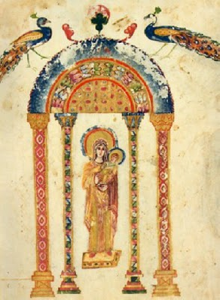
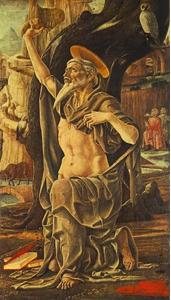


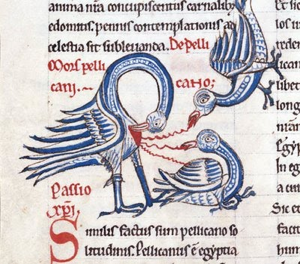

The Principles of a Traditional Art Education for Today
When I first met the president of Thomas More College of Liberal Arts, in Merrimack, New Hampshire, he asked me to describe my ideas for an art school that could contribute train artist to serve the Church. This was relatively easy for me to do. Inspired by John Paul II’s Letter to Artists, I had been on a mission for several years to establish such a school and so describing it was something I had done many times. I described how I would give a training that was rooted in traditional principles, teaching an understanding of what they were doing, so that the tradition becomes a living tradition. A living tradition can develop and respond to the needs of the time without compromising on the timeless principles of beauty, truth, goodness and unity that underlie all genuinely Catholic art. This would enable us I said, to produce art for both sacred and profane settings, and contribute to the establishment of the art of Vatican II. This will evoke the art of the past, yet be distinct and in many ways of a previously unimagined in style. It will characterise our era as beautifully and distinctly as the Romanesque, the Gothic and the Baroque did theirs.
The aim of such an education are threefold: to train in the practical skills; to increase in the individual an ability to apprehend beauty; and to open the individual up to inspiration from God through a disciplined training that looks to Masters for guidance.
Following traditional patterns of art training, there are five aspects (in no particular order):
- The study of past Masters of the traditions of Christian art – imitating them with understanding so that the students learn a visual vocabulary of art. In his Spirit of the Liturgy, Pope Benedict XV cites the icongraphic (of which the Romanesque is a Western variant), the gothic and the baroque ‘at its best’ as authentic liturgical forms.
- The direct observation of nature: this is the study of the work of the greatest Artist.
- Practice and study of abstract art in the Christian tradition and the principles of proportion and compositional design (sometimes called ‘sacred geometry’).
- Learning the theory of Christian art – an understanding of the Catholic worldview and the Church as it relates to art (theology, philosophy, liturgy linked to form and content) so that they understand all that they are practising.
- Finally, the development of a spiritual life that will open the student up to inspiration (should God choose to send it): artists are unlikely to be able to produce work that inspires prayer and devotion in others, if they are not practised in using visual imagery in prayer themselves.
Students would have an exposure to each of these elements. As study progresses, they would specialise in one of the artistic traditions listed, or into the development of new art forms consistent with the principles they have learnt and as required by the Church.
The president listened without interruption and then asked me a further question. What about those who aren’t going to be artists, can you provide a training that could be part of the core liberal-arts programme as an education in beauty?
I had never been asked this before. I stopped for moment to think before responding, then realized that this really was possible. The traditional artistic training not only taught people the skills, but also the ability to apprehend beauty. This aspect, I was certain could be taught to all and the result would be a transformation of the individual, for to open up someone to beauty, is to elevate their souls to God and to increase their capacity to love what is good. There would be change in emphasis, the practical elements would be there, but those aspects that would not be intimidating to someone who did not consider themselves good at art would be brought to the fore.
The result of this meeting was that I was invited to come to TMC to implement exactly what I had described. The first stage was to be the programme for undergraduates; this would be followed by the gradual identification of gifted artists from the undergraduate body, who would form the core of the specialist art school. I would be looking for those who not only wished to be artists, but were fired by the vision of the college and wanted to play a part in creating the ‘new epiphany of beauty’ called for by Pope John Paul II in his Letter to Artists.
This Fall, Thomas More College starts its Way of Beauty programme to be taken by all freshman (and offered as an elective for other students). It is a course that is, as far we know, unique in the world. It draws on the principles articulated by figures from the early Church, such as Augustine and Boethius and which have been drawn to our attention recently by John Paul II and especially Benedict XVI. What I had described in my interview were the principles of the quadrivium, the ‘four ways’ (the higher part of the traditional seven liberal arts).
The traditional quadrivium is essentially the study of pattern, harmony, symmetry and order in nature and mathematics viewed as a reflection of the Divine Order. When we perceive something as reflecting this order, we call it beautiful. For Christians this is a source, along with Tradition, that provides the model upon which the rhythms and cycles of the liturgy are based. Christian culture, like classical culture before it, was also patterned after this cosmic order; this order which provides the unifying principle that runs through every traditional discipline. Literature, art, music, architecture – all of creation and potentially all human activity – are bound together by this common harmony and receive their fullest meaning in the liturgy. This course teaches a deep understanding of these principles and how they link the liturgy, ie the cult, to its culture. When we apprehend beauty we do so intuitively. So an education that improves our ability to apprehend beauty develops also our intuition. All creativity is at source an intuitive process. This means that professionals in any field would benefit from an education in beauty because it would develop their creativity. Furthermore, the creativity that an education in beauty stimulates will generate not just more ideas, but better ideas. Better because they are more in harmony with the natural order. The recognition of beauty moves us to love what we see. Such an education would tend to develop also, therefore, are capacity to love and leave us more inclined to serve God and our fellow man. The result for the individual who follows this path is joy.
This course not only teaches the students an understanding of these principles. It teaches them how to apply them. The course is directed towards the creation of beauty as well the appreciation of it. We will chant the Liturgy of the Hours, relating not only the structure of the Office itself to the Mass and the Heavenly Liturgy, but the form of the music to the harmonious principles that are replicated in the visual arts as, for example, the abstract geometric art of the Cosmati pavements of the middle ages; and used as principles for compositional design in figurative art. They will construct geometric patterns that reflect this
The practical aspect is not an extra bit of light-hearted fun tacked on to the end of the course. It is considered a vital component. It is the practical creation of beauty that effects the transformation in the person. First, it develops the habit of conforming the whole person to divine order, which is impressed by degrees upon the soul. Second, it is exercising the creative aspect of the intellect in us. We are made by God to be with Him in heaven, partaking of the divine nature. God’s intellect is purely creative intellect – if He thinks something it is. The creation of beauty is therefore a temporal step into our heavenly destiny and so directs us on to the path to heaven. Third, when beauty is created it is a gift for God and directs the hearts of others who behold it to God, bringing glory to Him. Therefore it is an act of love. This is the most powerful transforming principle of all.
The benefits to the person are present most powerfully in the Liturgy, but it is important that there is an experience also of the creation of art other than the praying of the liturgy also. This demonstrates to the students how these liturgical principles are made present in the wider culture. Even the form of the Liturgy of the Hours we are learning is developed to emphasise this link between the culture and the Liturgy. It was first developed at the Maryvale Institute, in Birmingham, England, as part of their art theory course, Art Inspiration and Beauty from a Catholic Perspective, where I taught before moving to the US. The students learn to involve the whole person in the prayer, body and soul, so that it is a greater gift to God and they are fully open to inspiration and God’s grace. This means that we engage the senses directly with sacred imagery, chant, incense and consider bodily posture. This is a simple and beautiful form that draws on the tradition of the Church.
And what about the art school? It was felt that to make all students learn to paint icons was not a good thing, as some would be intimidated by this. There will be elective classes in icon painting and drawing throughout the year so that those who are interested can develop their interest. We will be offering a summer school next year open to people outside the college as well and that offers a condensed form of the Way of Beauty in a week (which like the undergraduate class, is for artists and non-artists). Artists would wish to take in addition a two-week course in iconography and a two-week course in academic drawing, as taught in the ateliers of Florence.
I arrived at Thomas More College in January this year and I have been surprised (and very pleased) by the interest that the appointment of an Artist-in-Residence has created. There have been numerous newspaper features and even a TV appearance (I was invited to talk about the TMC programme on EWTN in late spring). This demonstrates to me that the is a great desire in the Catholic world to see once again a distinctly Catholic culture of beauty united to the liturgy. In fact as a result of this I have had several enquiries from people looking to study art full time who are well grounded in the Faith and committed to the wider vision, so much earlier in the development process than I had originally planned, I am even expecting our first full time art student to begin this Fall.








